Looking to the future
The story of the Right to Health project

Since 2018, Sightsavers' Right to Health project has brought inclusive eye health to marginalised communities across Bangladesh and Pakistan.
Around the world, the number of people in need of eye care is spiralling. 2.2 billion people – nearly one in three of us – have a visual impairment, but almost half of vision impairment is preventable or treatable.
There are often barriers that stop people from getting the eye care services they need. These can include costs of treatment and transport; discrimination on the grounds of disability, gender, income, ethnicity or other factors; or inaccessible buildings and a lack of braille signage or sign language translators.
The Right to Health project aimed to break down barriers to eye health for hard-to-reach communities in Pakistan and Bangladesh. Funded by the UK government through UK Aid Match, the aim of this £3.3 million, 42-month project was to restore, save and protect the sight of 2.2 million people by improving the inclusivity of eye care services.
See the impact of the Right to Health project, year by year, and the people whose lives have been changed.
2018
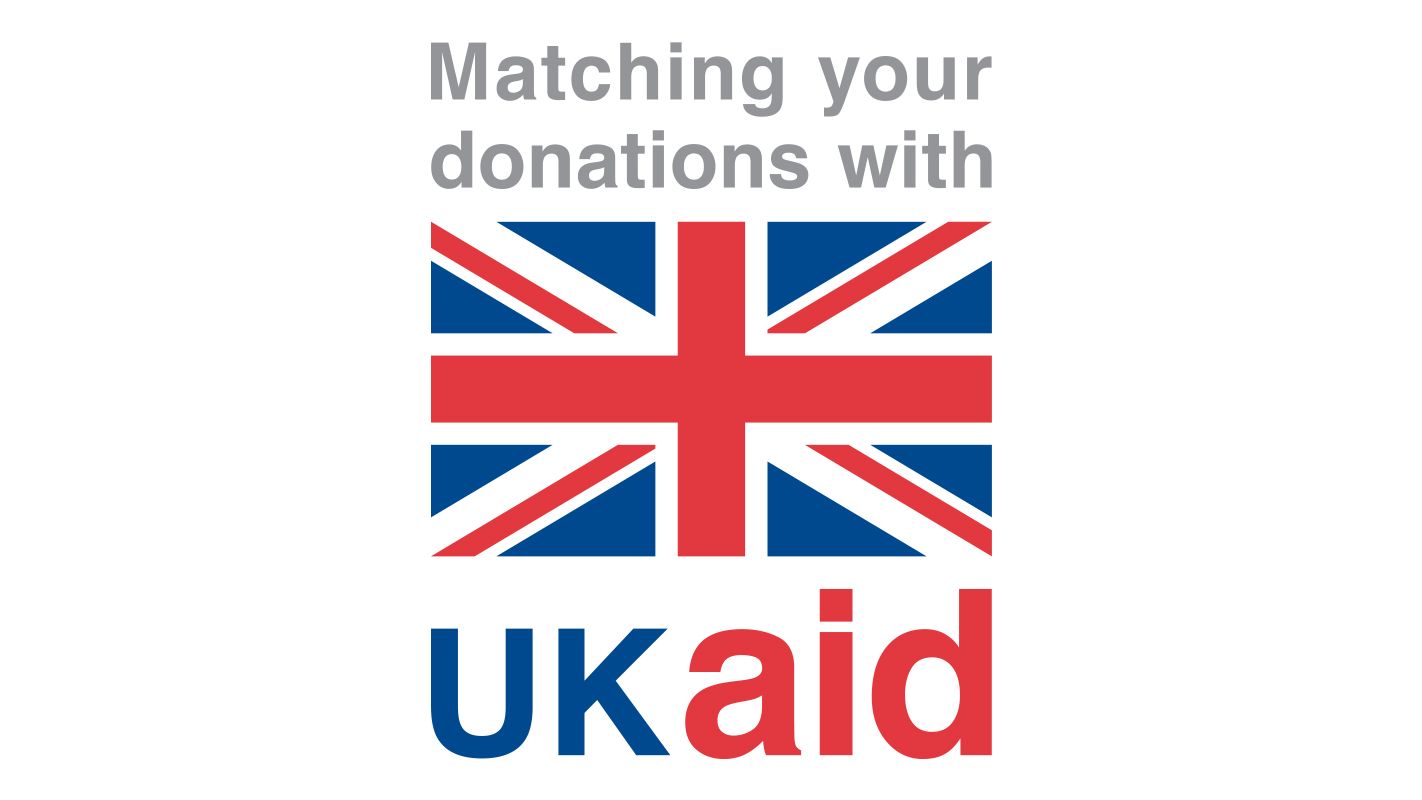
July 2018
The Right to Health project begins
The Right to Health project, funded by the UK government through UK Aid Match, is one of Sightsavers’ first inclusive eye health projects. It aims to demonstrate a new way of bringing health care to the most marginalised and excluded groups in Bangladesh and Pakistan.
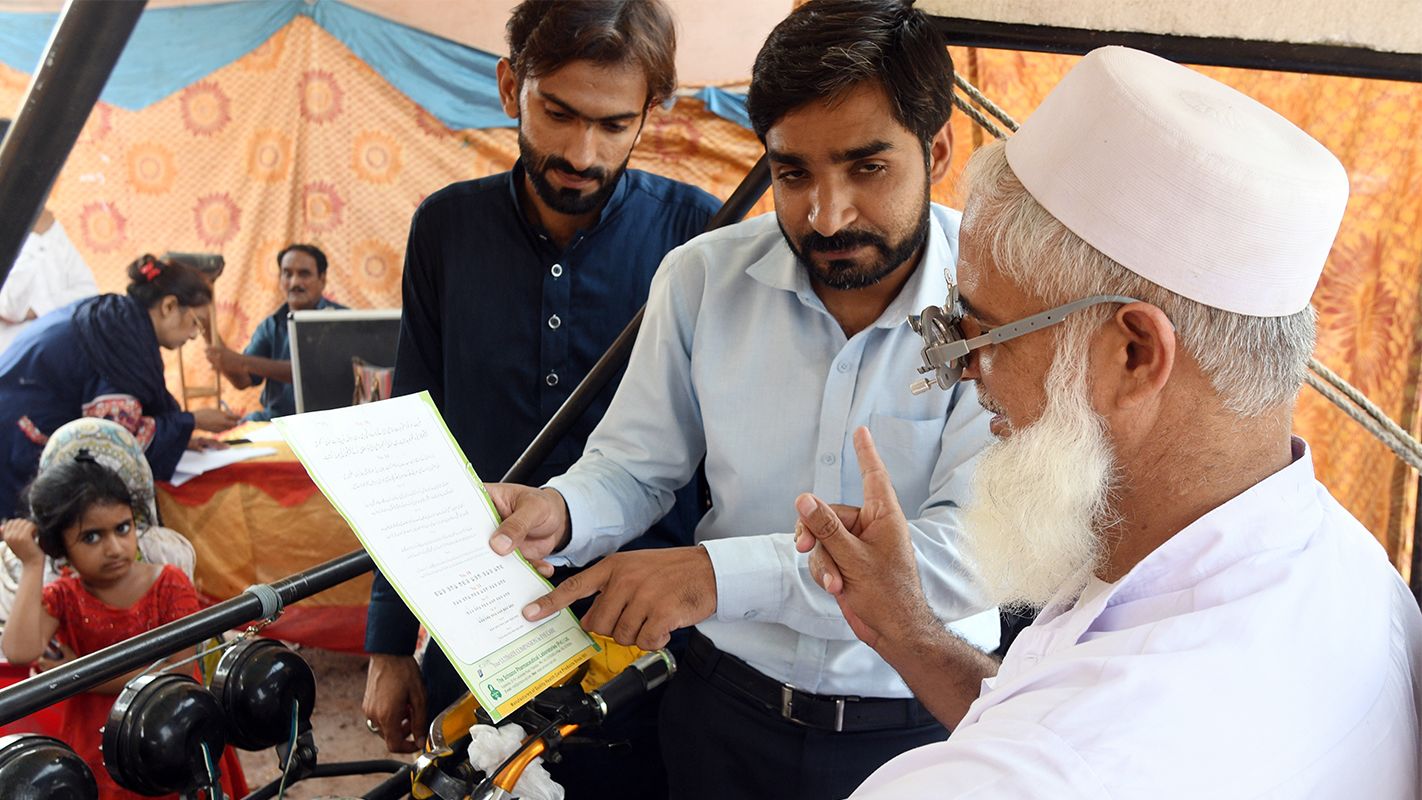
A patient gets his eyes tested at an outreach eye camp in the village of Barakoh which is outside Islamabad, Pakistan.
July 2018
The first eye camp is held
Held in both Bangladesh and Pakistan, eye camps bring safe, free and welcoming eye health care directly to the people who need it most.
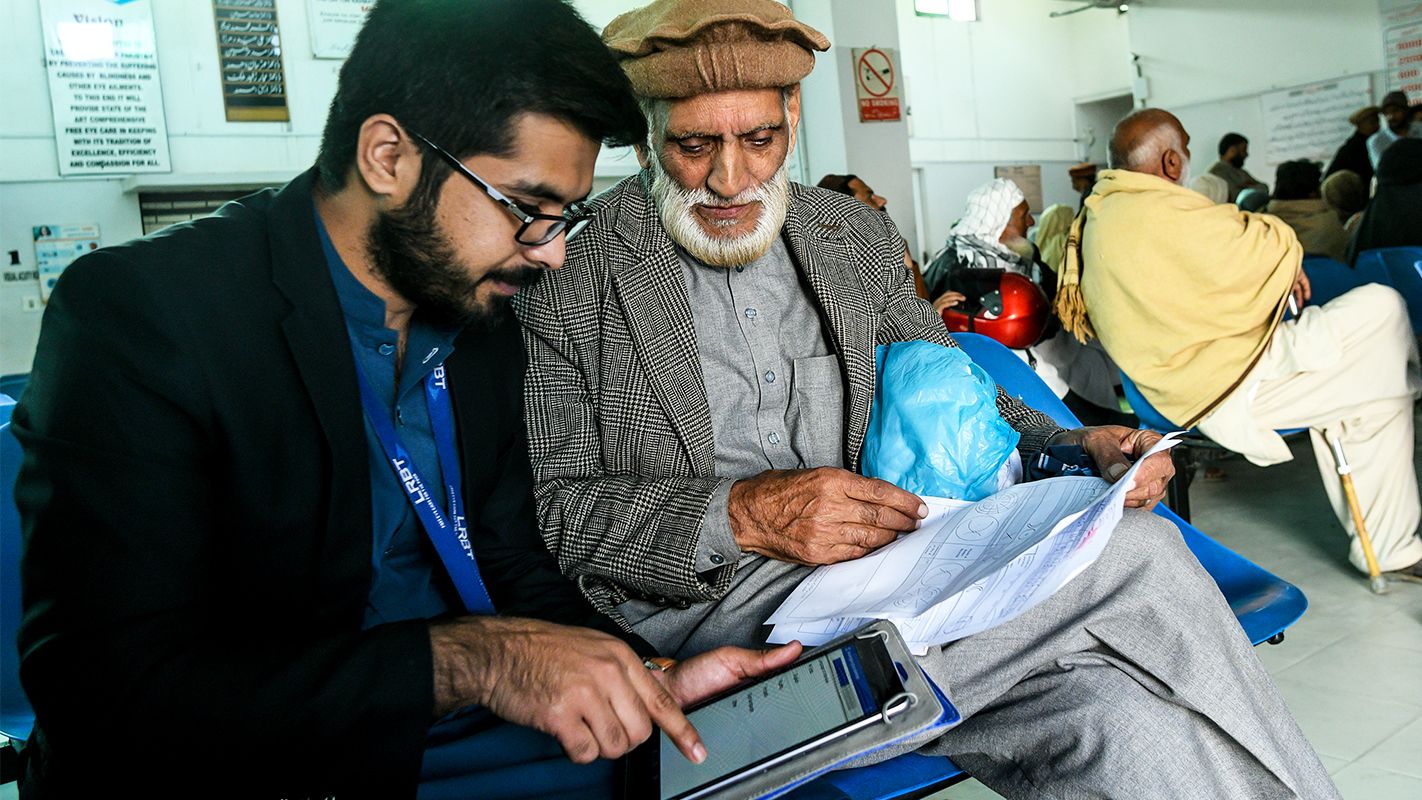
Muhammad Suleman, a data collector, interviews a patient at LRBT Hospital in Mandra, Pakistan.
August 2018
“If you don’t have numbers, you can’t make any decisions”
In the past, there’s been a lack of accurate statistics about people with disabilities – but this is essential to make sure disability inclusion is factored into policymaking and legislation. For the project, hospital staff were trained to gather patient data broken down by factors including disability. As Atif Sheikh, executive director of STEP (one of Pakistan’s largest organisations of people with disabilities) explains: “If you don’t have numbers, you can’t make any decisions.”
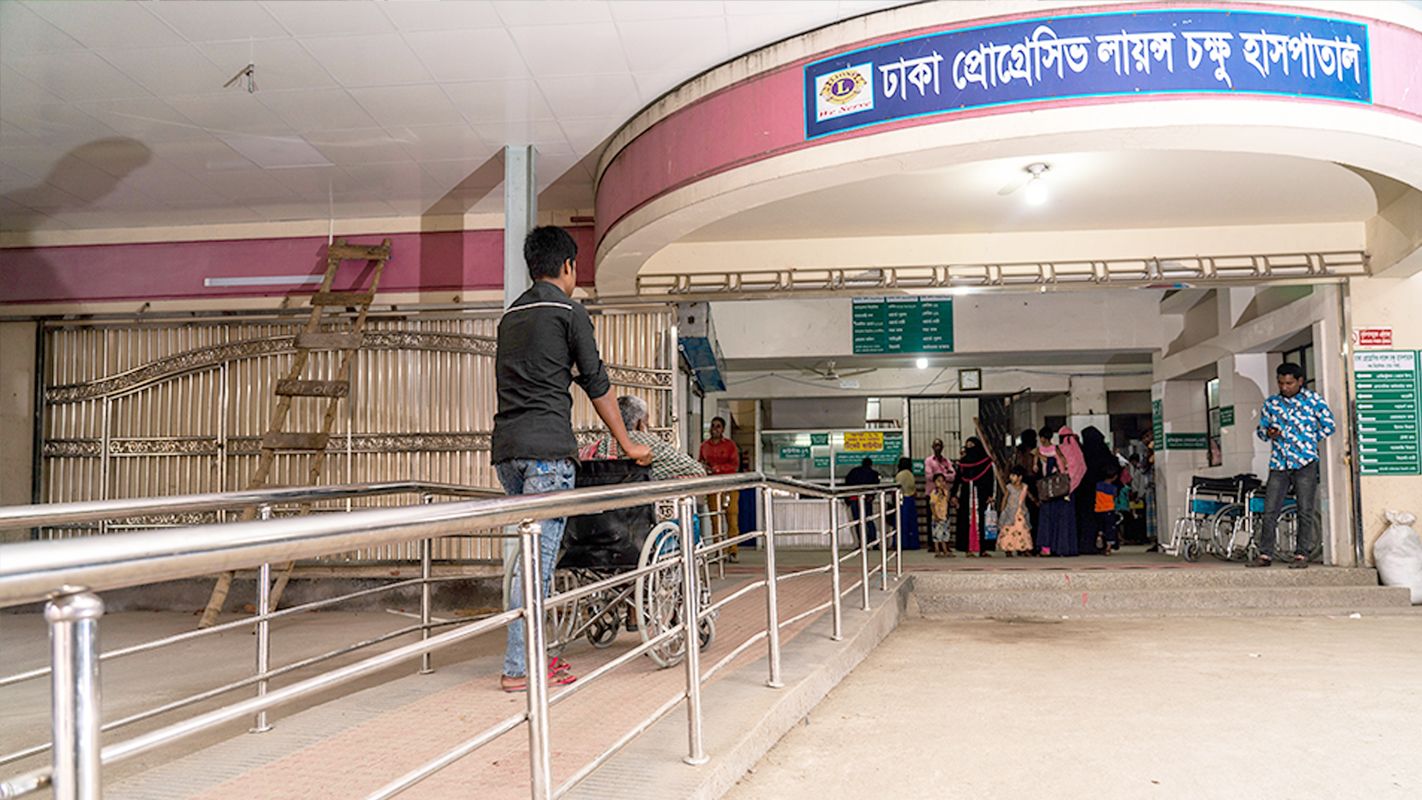
Following the accessibility audit, a ramp was added to the entrance of Dhaka Progressive Lion's Eye Hospital in Narsingdi, Bangladesh.
November 2018
Health care centres undergo accessibility audits
Alongside the outreach eye camps, the project includes accessibility audits that examine eye hospitals to ensure that patients with disabilities can access eye health care without barriers. These audits also ensure that hospitals are accessible for older people and pregnant women.
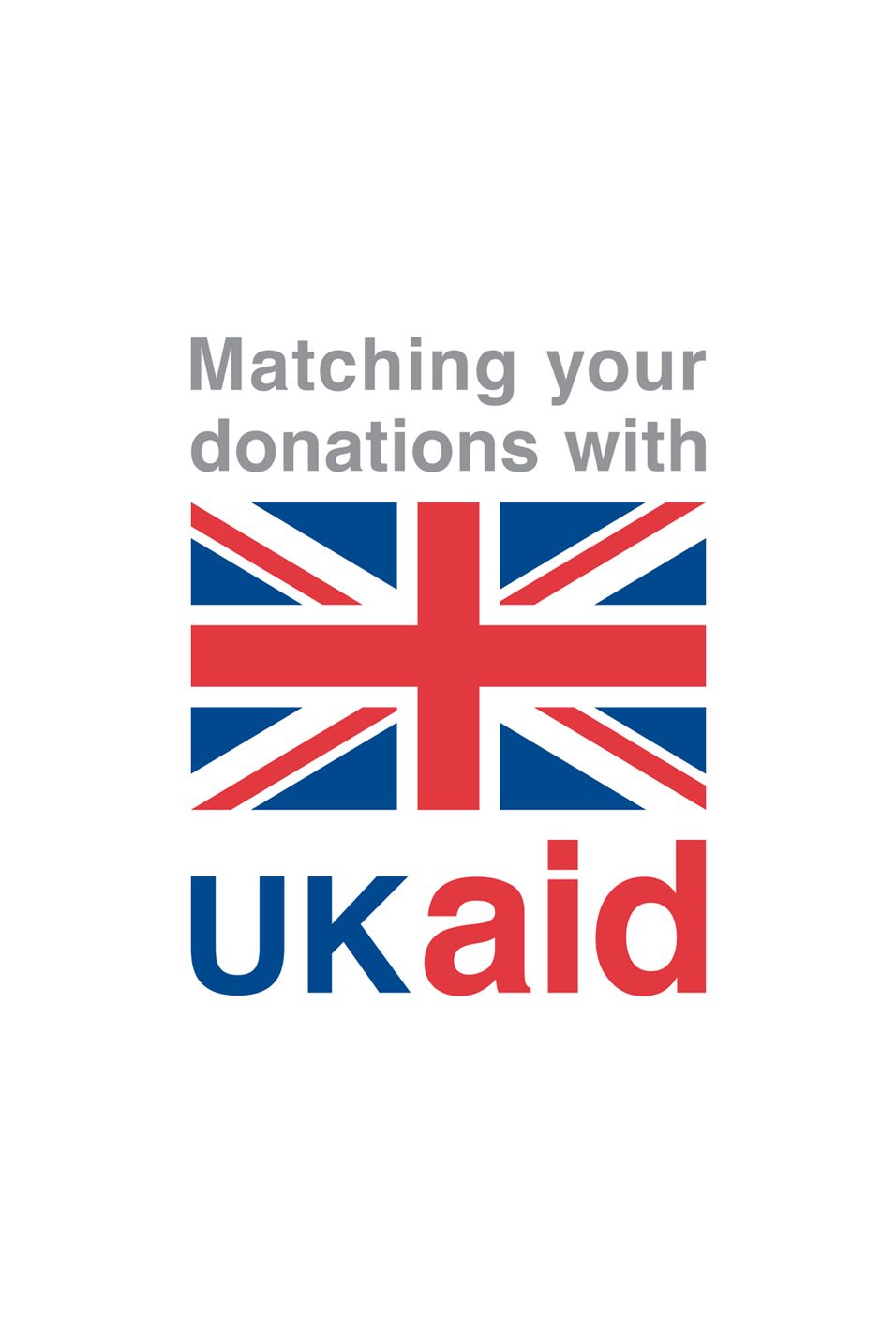
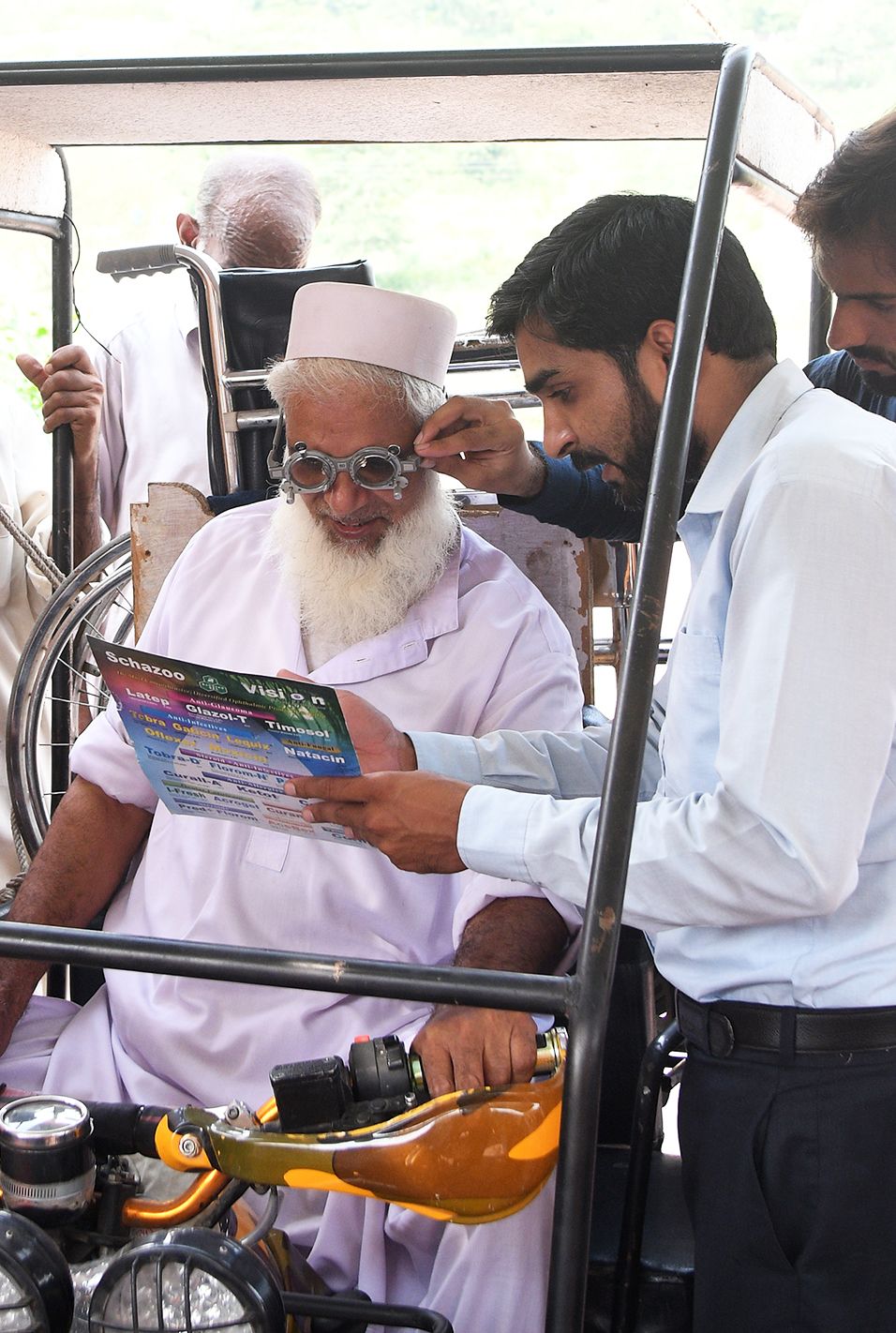
A patient gets his eyes tested at an outreach eye camp in the village of Barakoh which is outside Islamabad, Pakistan.
A patient gets his eyes tested at an outreach eye camp in the village of Barakoh which is outside Islamabad, Pakistan.
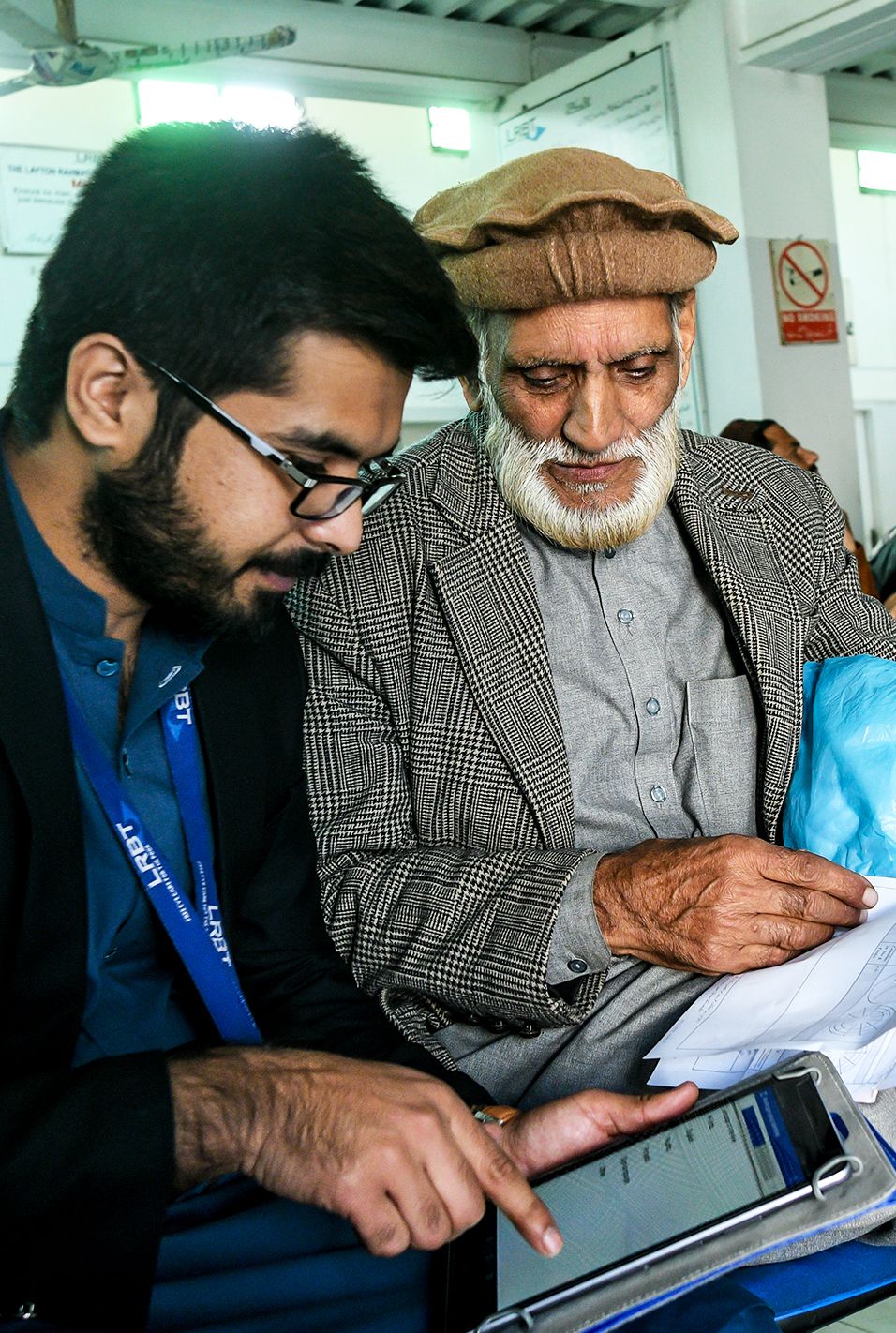
Muhammad Suleman, a data collector, interviews a patient at LRBT Hospital in Mandra, Pakistan.
Muhammad Suleman, a data collector, interviews a patient at LRBT Hospital in Mandra, Pakistan.
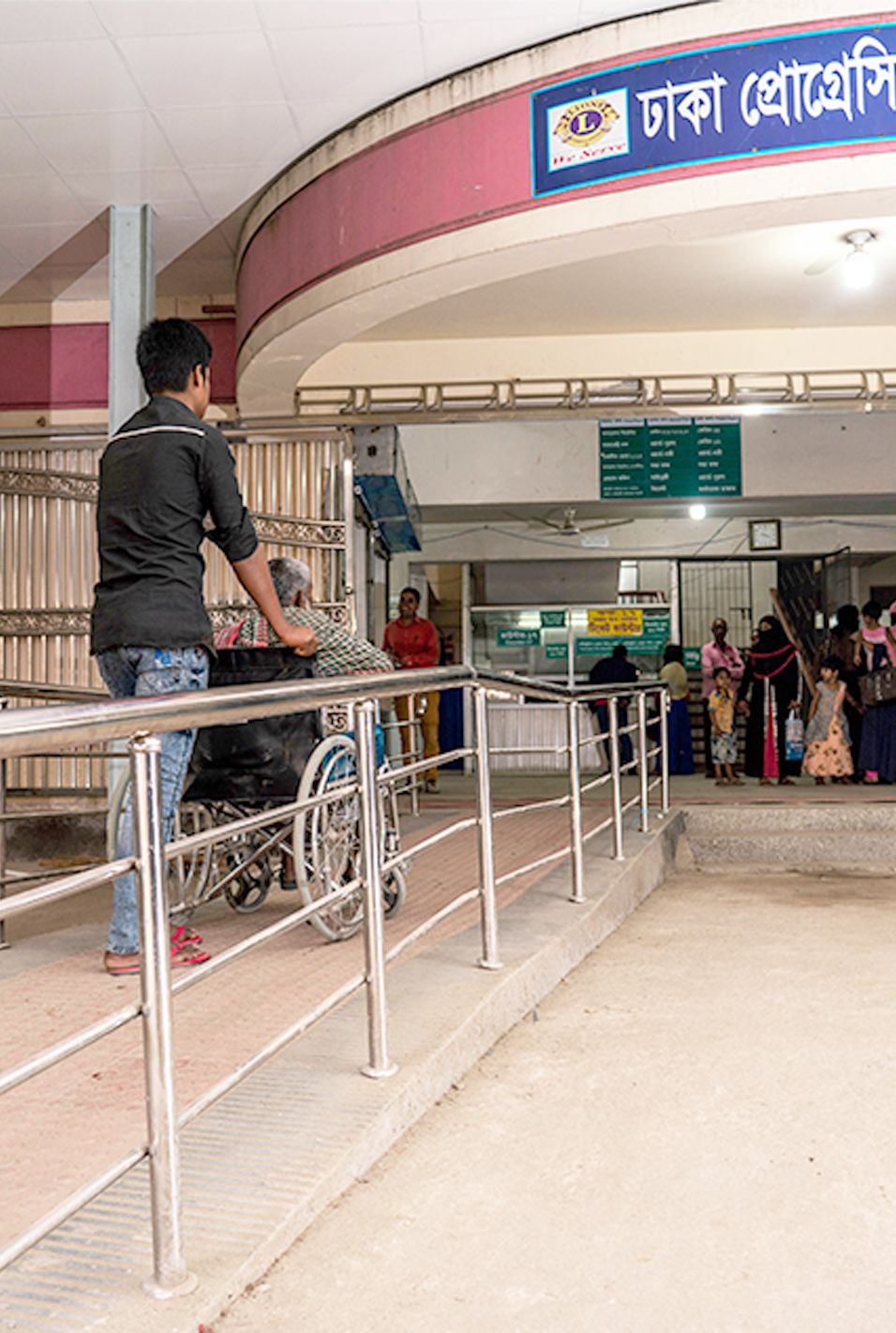
Following the accessibility audit, a ramp was added to the entrance of Dhaka Progressive Lion's Eye Hospital in Narsingdi, Bangladesh.
Following the accessibility audit, a ramp was added to the entrance of Dhaka Progressive Lion's Eye Hospital in Narsingdi, Bangladesh.
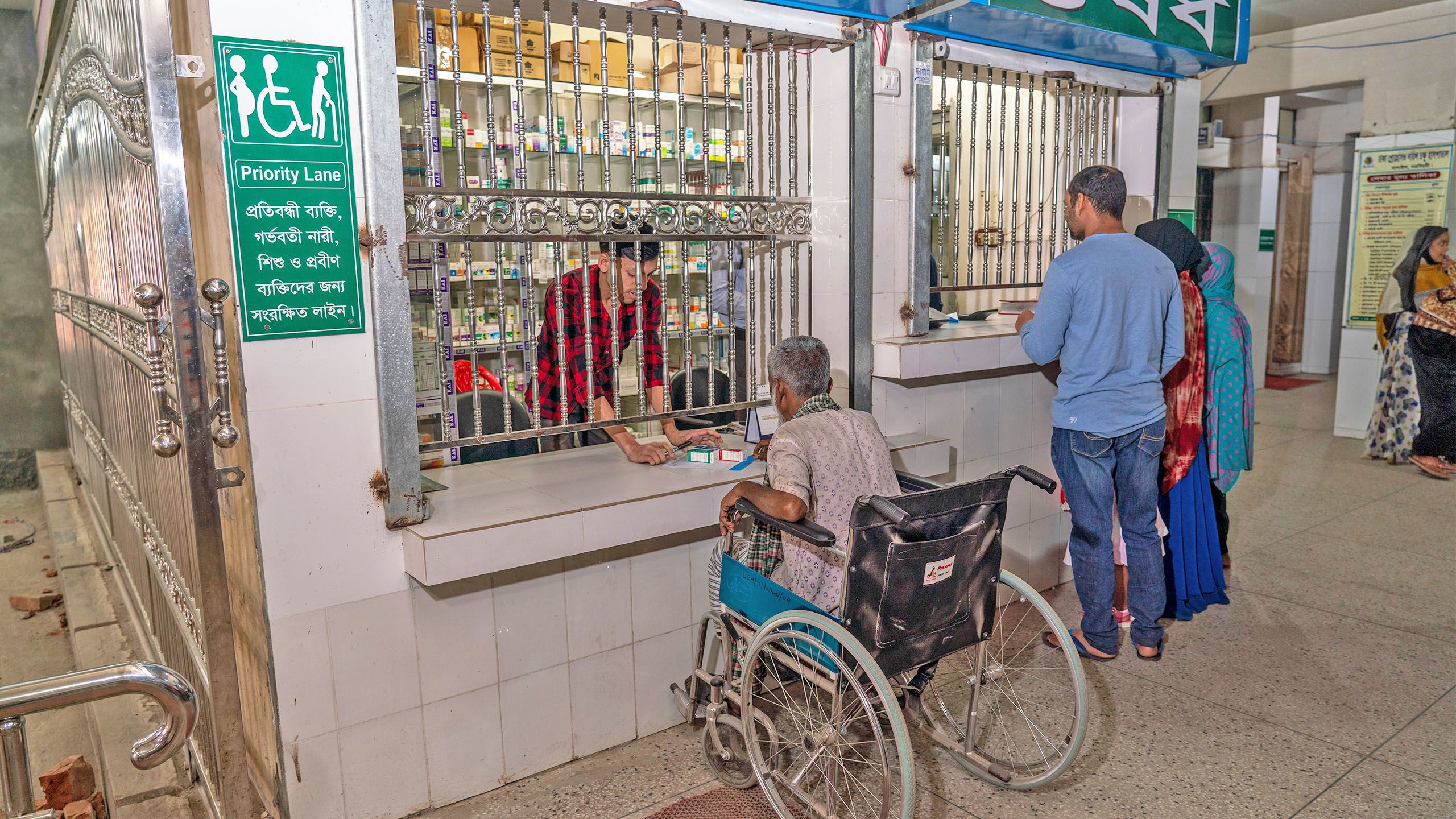
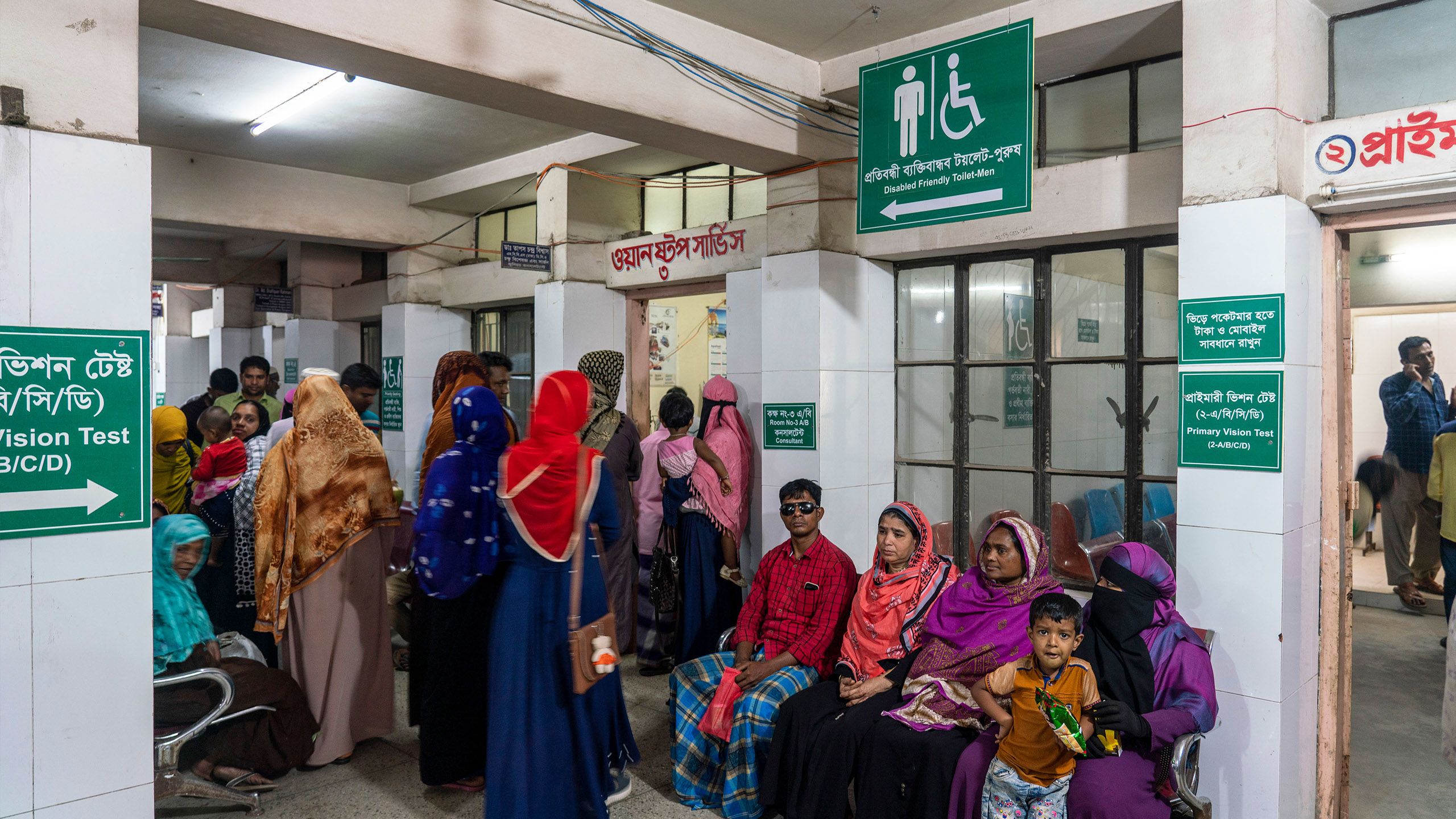

Another update at Dhaka Progressive Lion's Eye Hospital was the introduction a lowered reception desk.
Another update at Dhaka Progressive Lion's Eye Hospital was the introduction a lowered reception desk.

Accessible signage was also added throughout the hospital.
Accessible signage was also added throughout the hospital.
2019

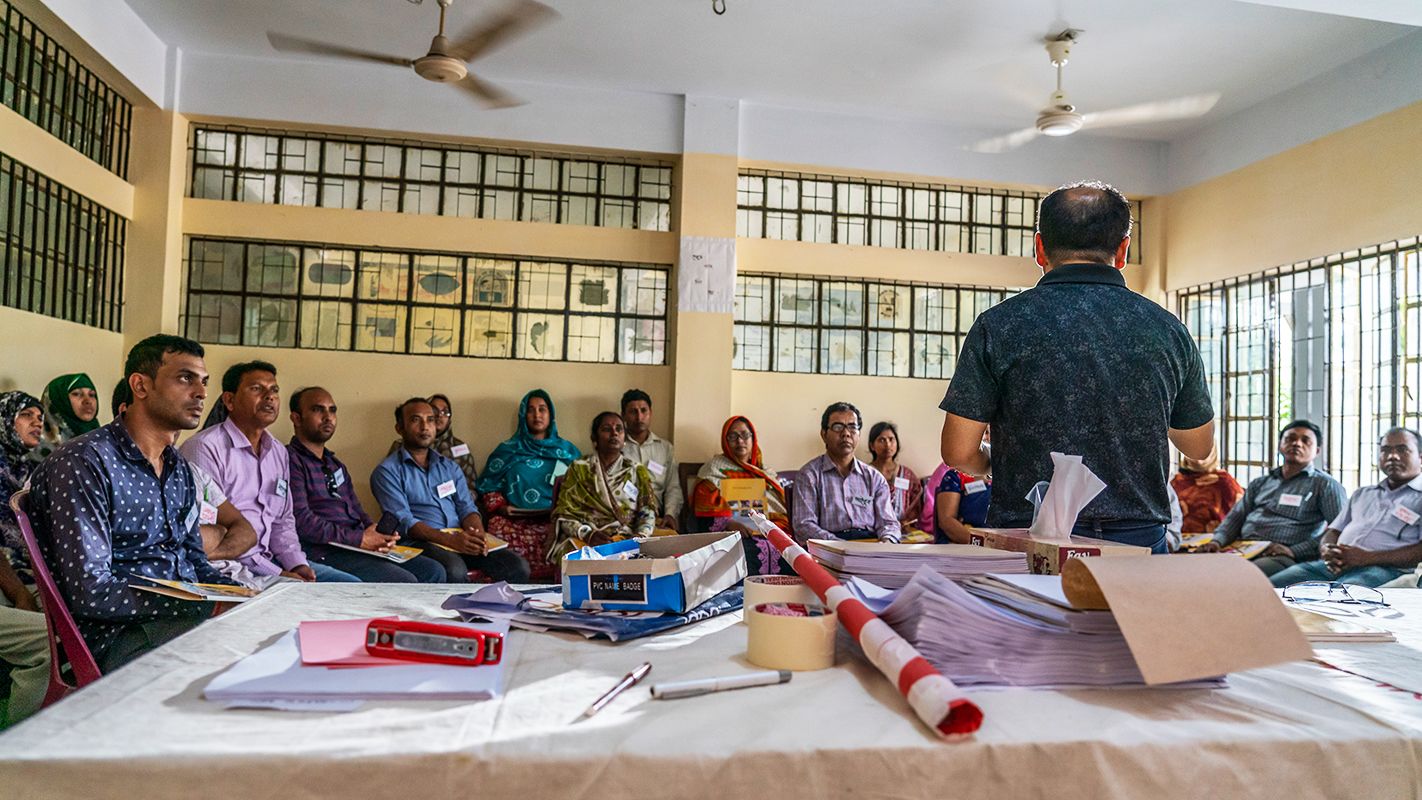
A disability and inclusion workshop in action at Marium Eye Hospital.
March 2019
First disability, inclusion and gender training is held for health care staff
The training works to change the attitudes of hospital staff around inclusion, including how to engage and reach marginalised communities and recognise the needs of patients with disabilities. Staff are also being trained in sign language to make it easier for patients with hearing impairments to receive care and information.
Over the lifetime of the project in Bangladesh, around 336 hospital management staff and 1,802 health workers will receive training. In Pakistan, 122 hospital staff and 30 community-level staff will be trained on disability inclusion and 88 staff members will receive sign language training.
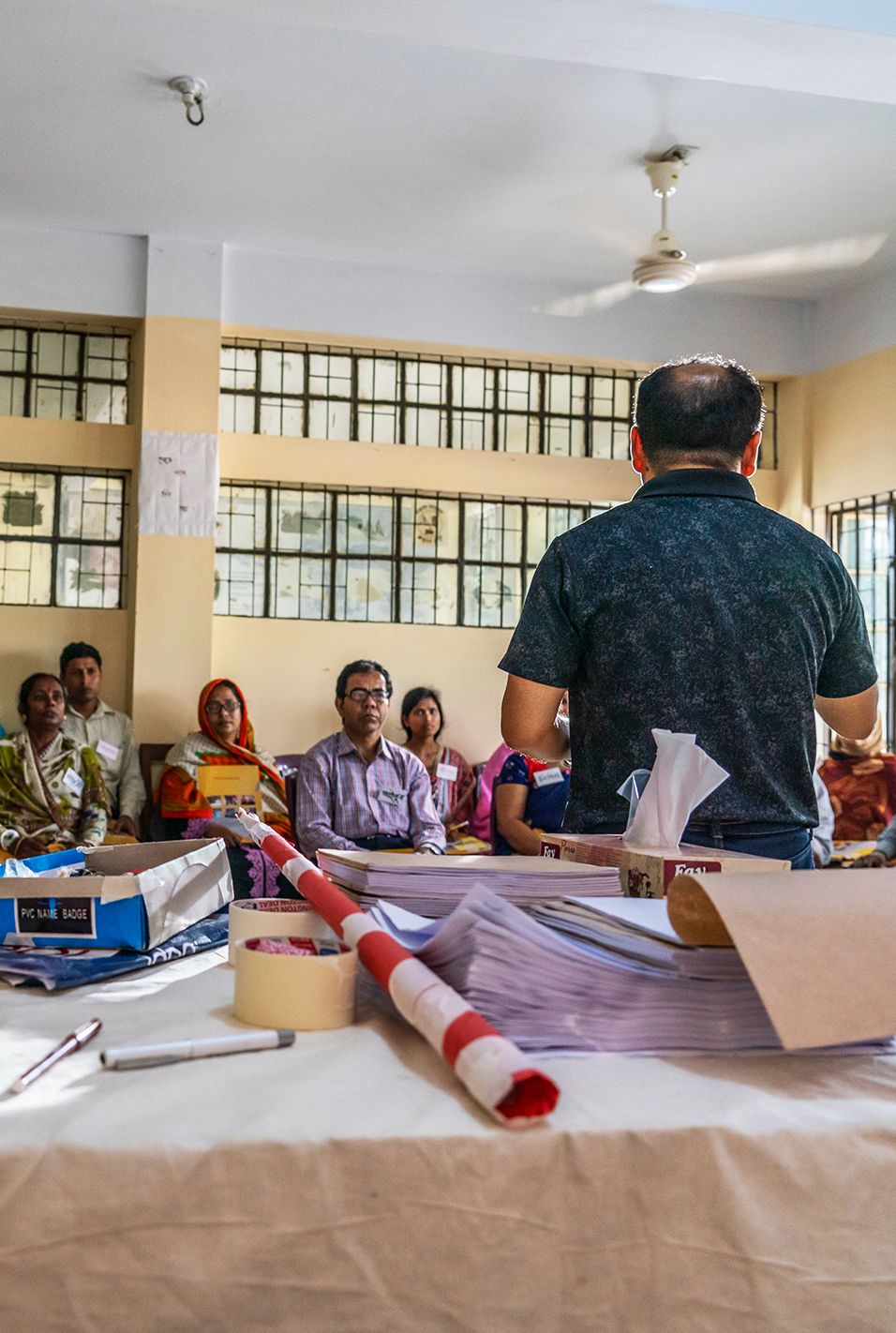
A disability and inclusion workshop in action at Marium Eye Hospital.
A disability and inclusion workshop in action at Marium Eye Hospital.
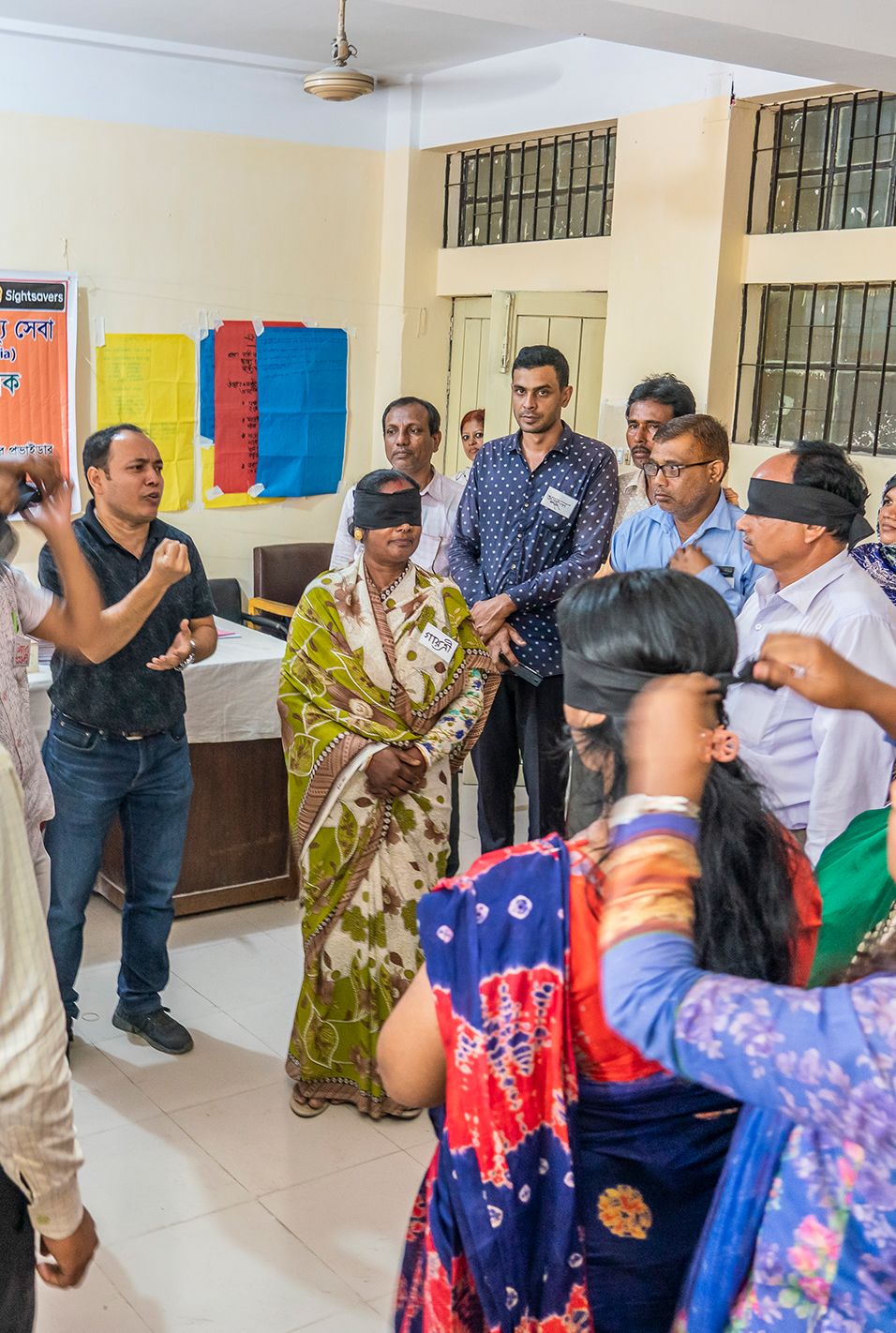
Health workers at Marium Eye Hospital taking part in an exercise during their disability and inclusion workshop.
Health workers at Marium Eye Hospital taking part in an exercise during their disability and inclusion workshop.
“Nobody tells people with disabilities how to improve their lives by taking care of their health and managing their disability”
Farah Butt, founder of Development for Disabled People’s Organisation (DDPO)

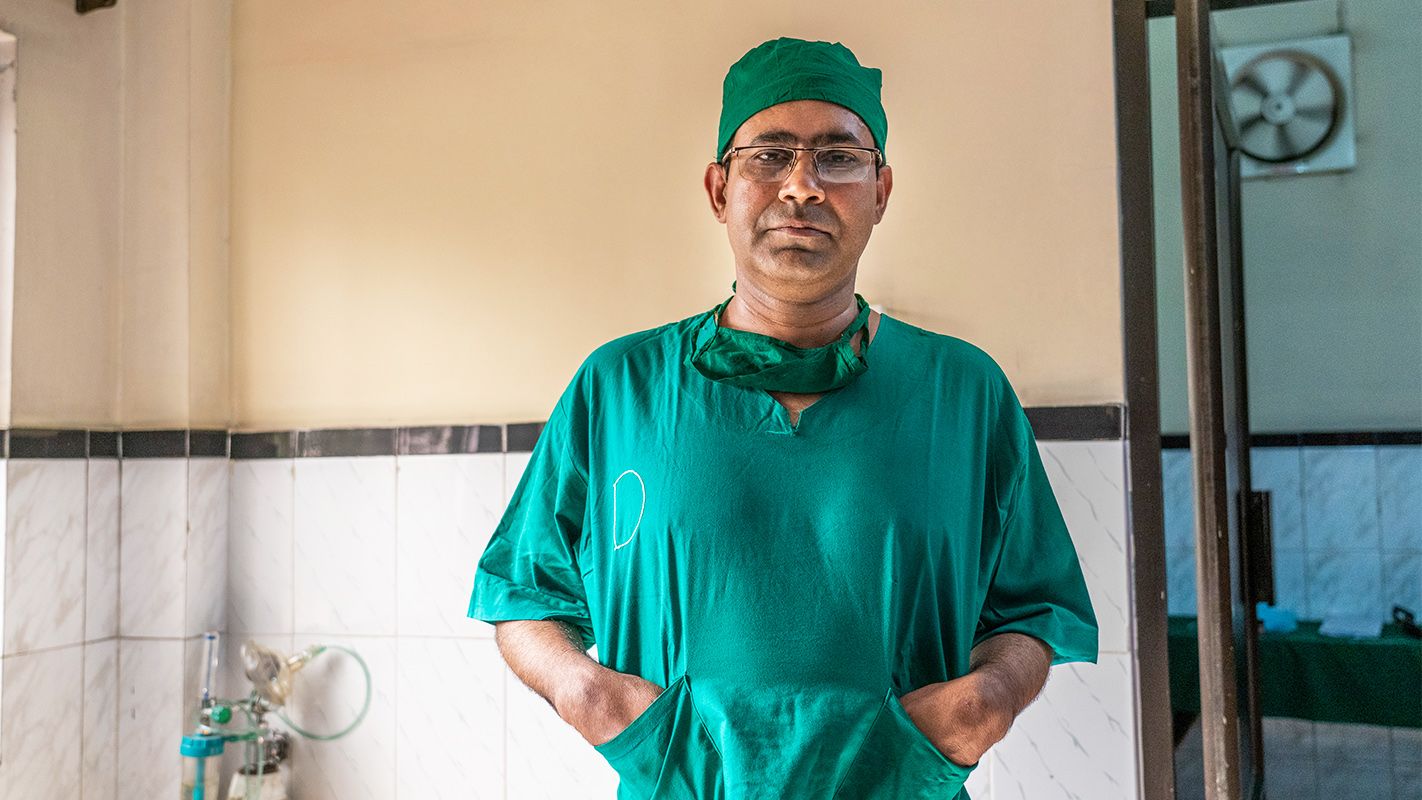
Dr Subrata at work.
April 2019
“We make them smile, that is our biggest achievement”
Dr Subrata Mazumder is a junior consultant conducting cataract operations at Marium Eye Hospital in Kurigram, Bangladesh, where has he has worked for almost 20 years.
Dr Subrata works at the hospital two days a week and performs up to 45 surgeries each day.
He says: “Success is vision. We can give vision, that is the biggest thing. Sightsavers has played a huge role in this. These people have no other option,” he explains. “And people who are blind don't have any assistance. We make them smile, that is our biggest achievement.”
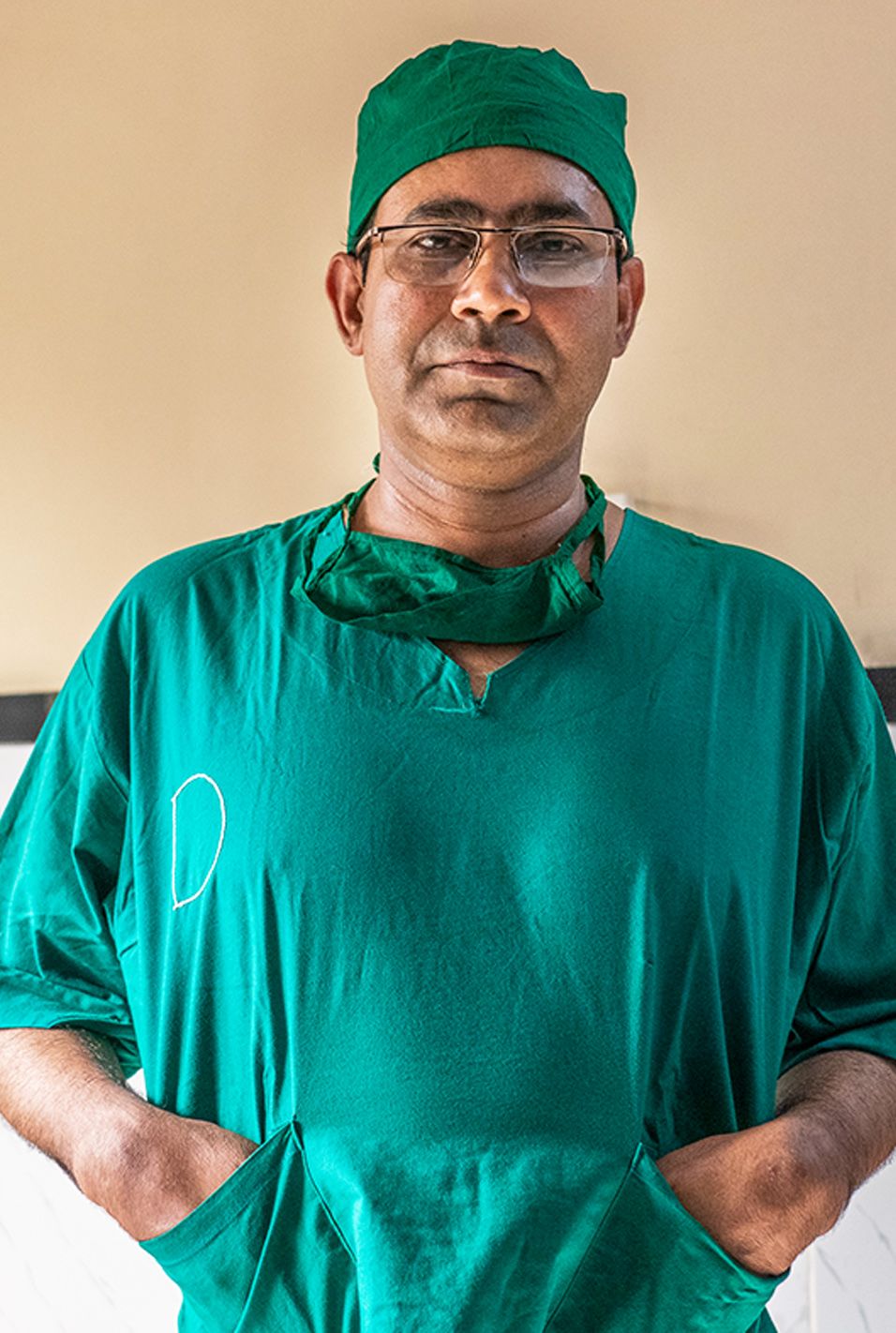
Dr Subrata at work.
Dr Subrata at work.
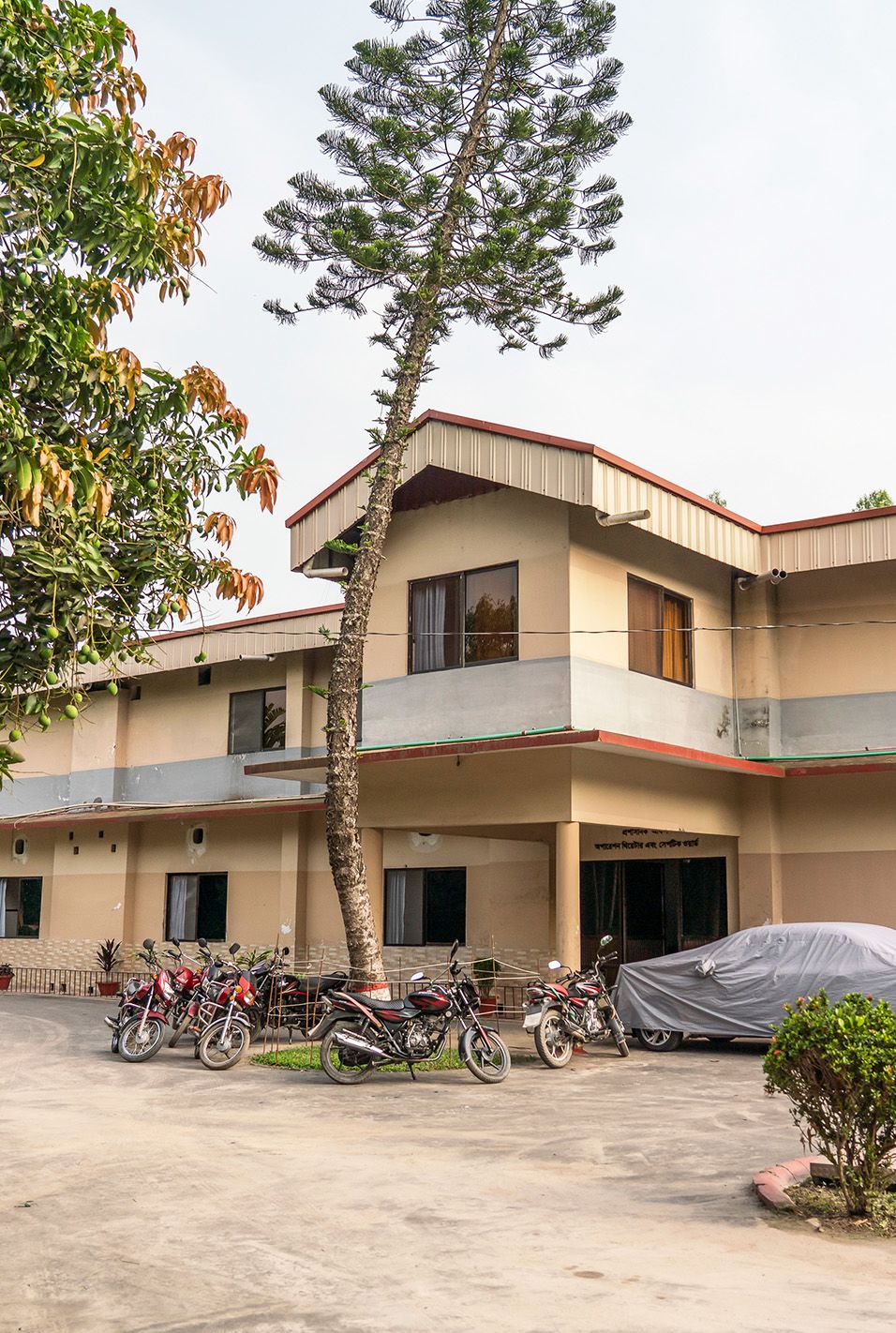
Marium Eye Hospital in Kurigram, where patients from eye camps across Rangpur are referred to for treatment.
Marium Eye Hospital in Kurigram, where patients from eye camps across Rangpur are referred to for treatment.
July 2019
A year into the project, we had reached 770,720 people across Bangladesh and Pakistan
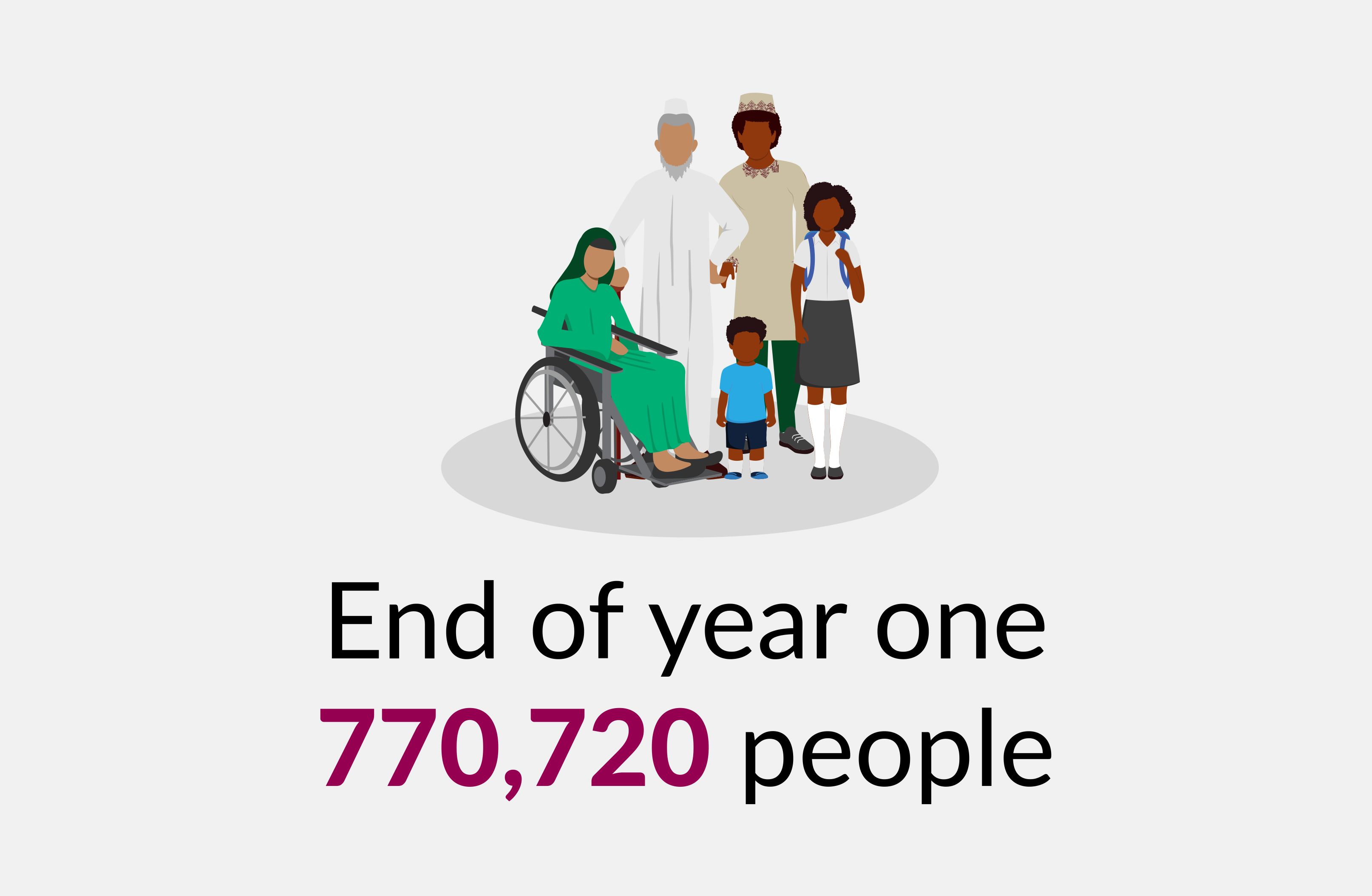
2020

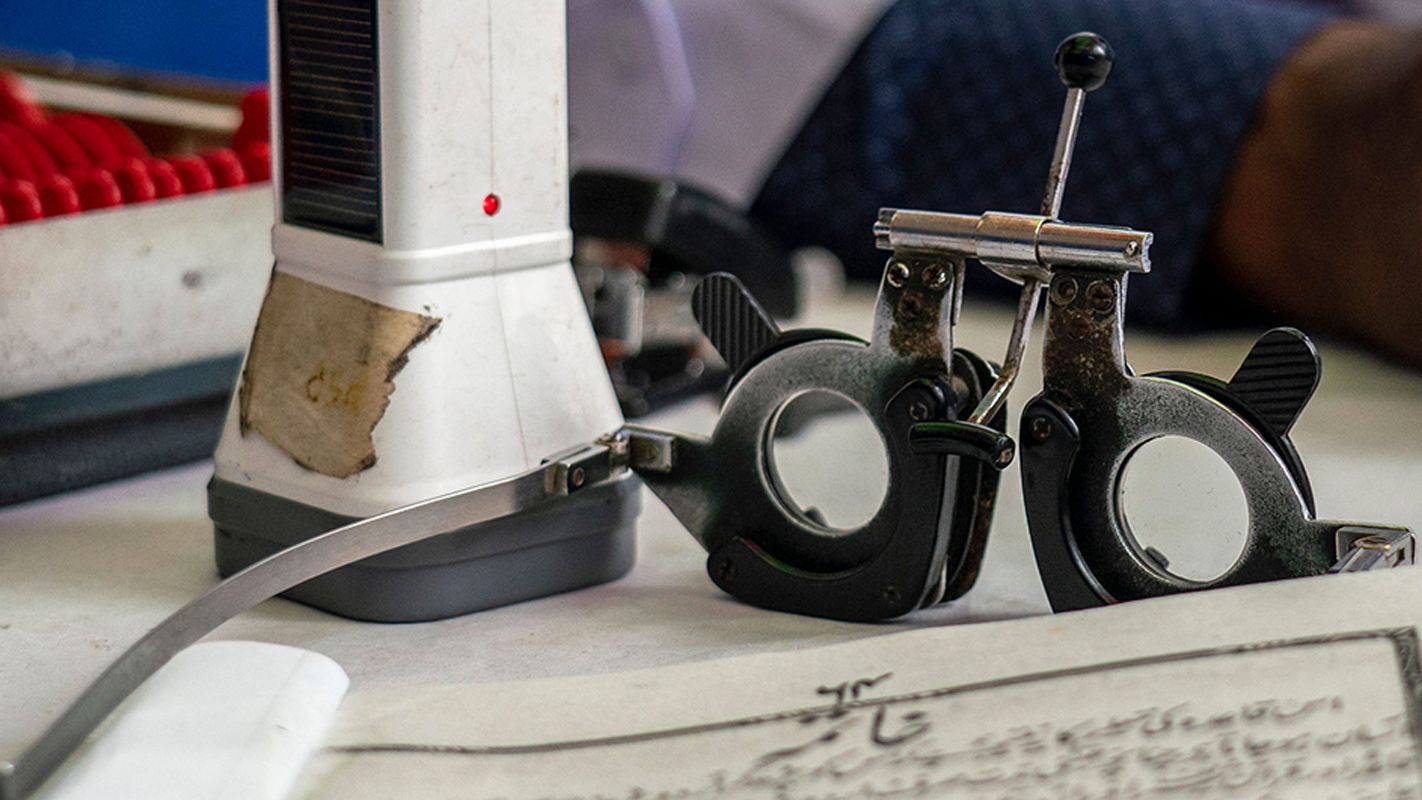
A refractionist's notes and equipment at an eye camp in Rangpur, Bangladesh for the Bihari Community.
January 2020
Work begins with the government of Pakistan to develop inclusive eye health policies
In early 2020, guidelines and a plan were created to work with the government of Pakistan to further integrate inclusion into its eye health strategies and develop inclusion guidelines for new policies and programmes. The project also supported the inclusive eye health taskforce which has since been involved in the development of national guidelines on eye health.
February 2020
A pop-up eye camp in numbers
In February, our team held a one-day pop-up screening camp in Rangpur, Bangladesh for the Bihari community. Members of the community have experienced discrimination and lacked access to essential services since they fled violence in India in the 1940s to live in Bangladesh (known at the time as East Pakistan).
Here’s the day in numbers.
Of the 321 adults and children who attended the one-day camp…
- 75 were given eye drops
- 57 needed cataract operations
- 52 had their glasses checked
- 29 received pairs of glasses
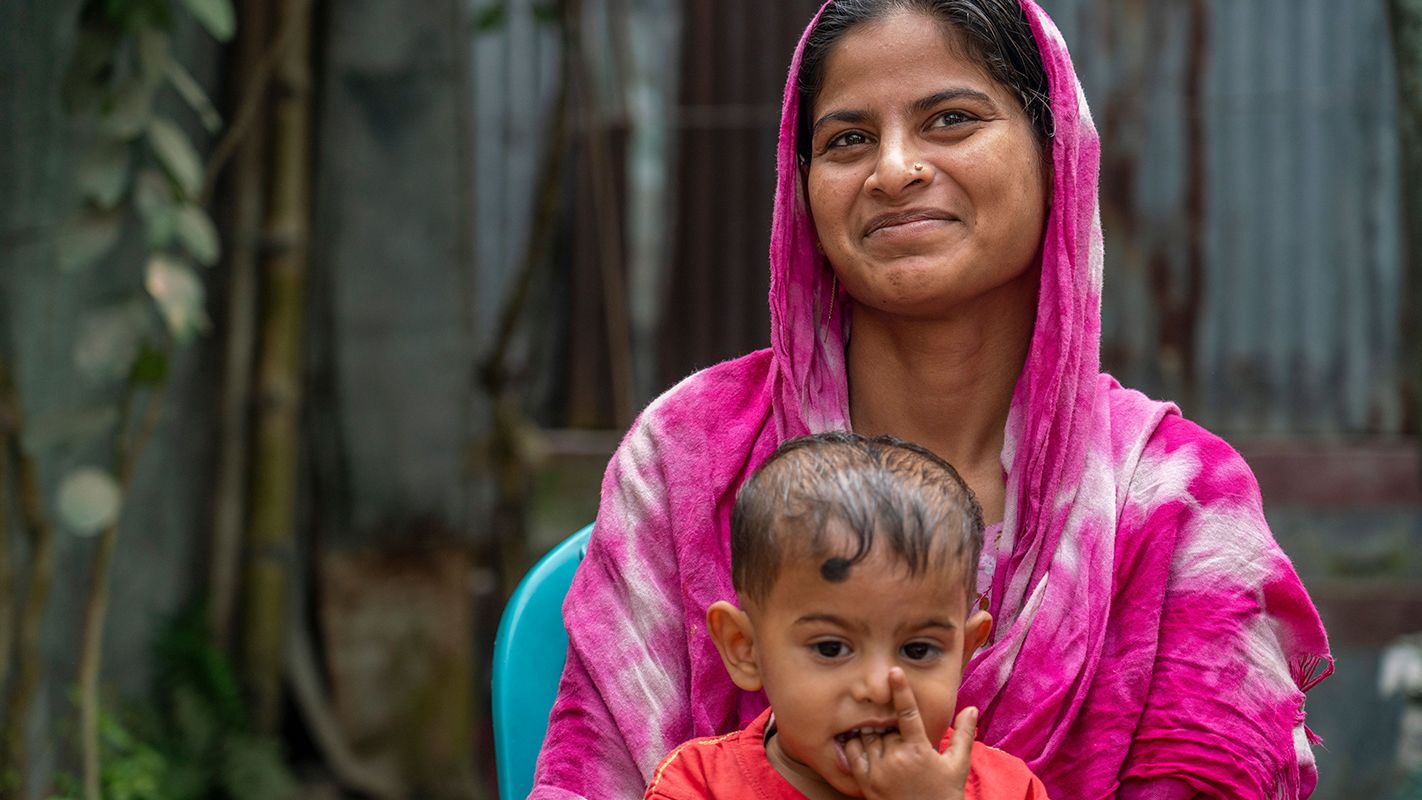
Shamima and her daughter, Toha.
March 2020
Claiming rights and restoring sight: Shamima’s story
For two years, 20-year-old Shamima had been finding it increasingly difficult to see but through the project, she was able to have her eyes examined and have sight-saving surgery.
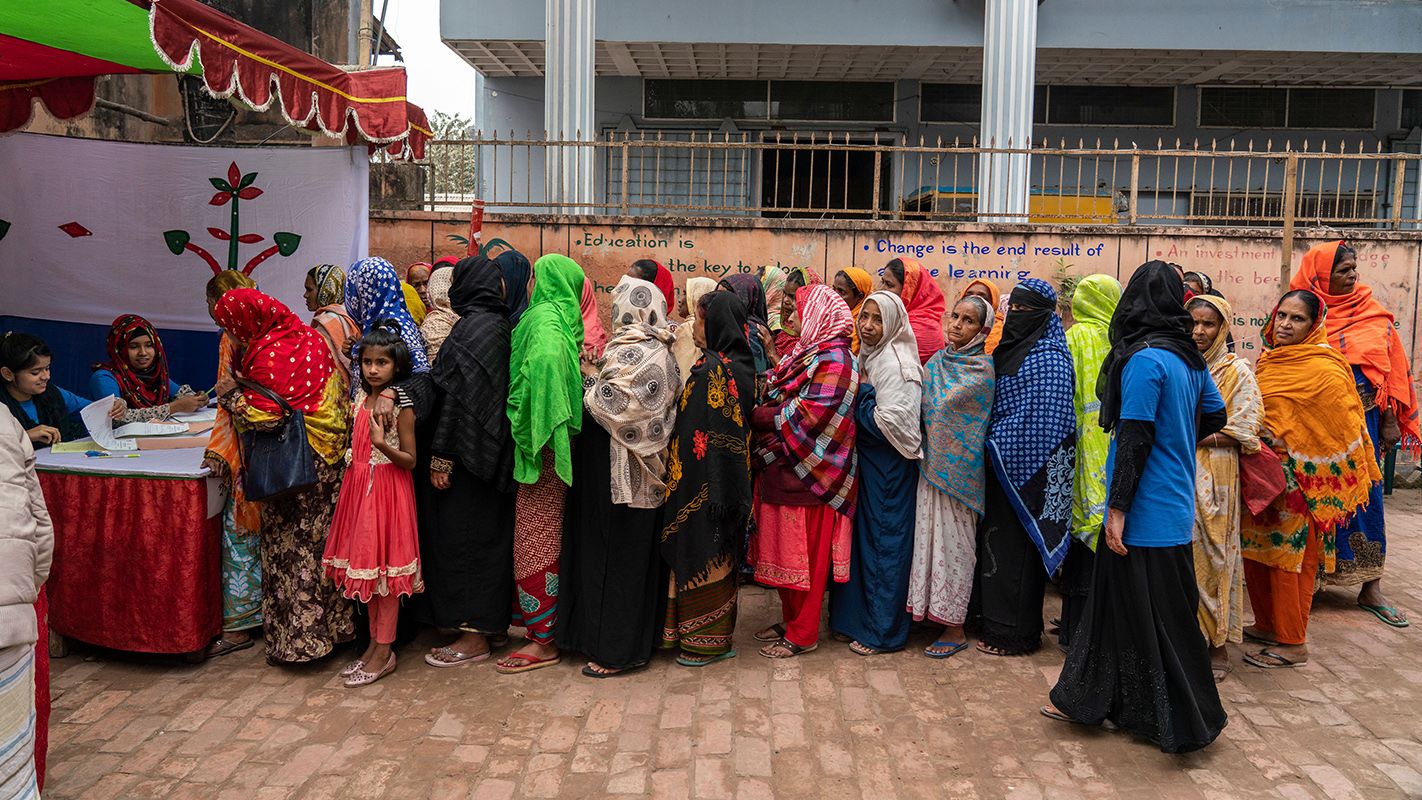
Women queue to register for an eye camp in Rangpur, Bangladesh.
March 2020
“We put a special focus on women with disabilities and their rights”
For International Women’s Day in 2020, we held targeted eye camps for women in four districts in Bangladesh. After the camps, we held a seminar, led by the government, where we shared our findings and best practice on targeting marginalised women so that other government bodies can learn from what we are doing.
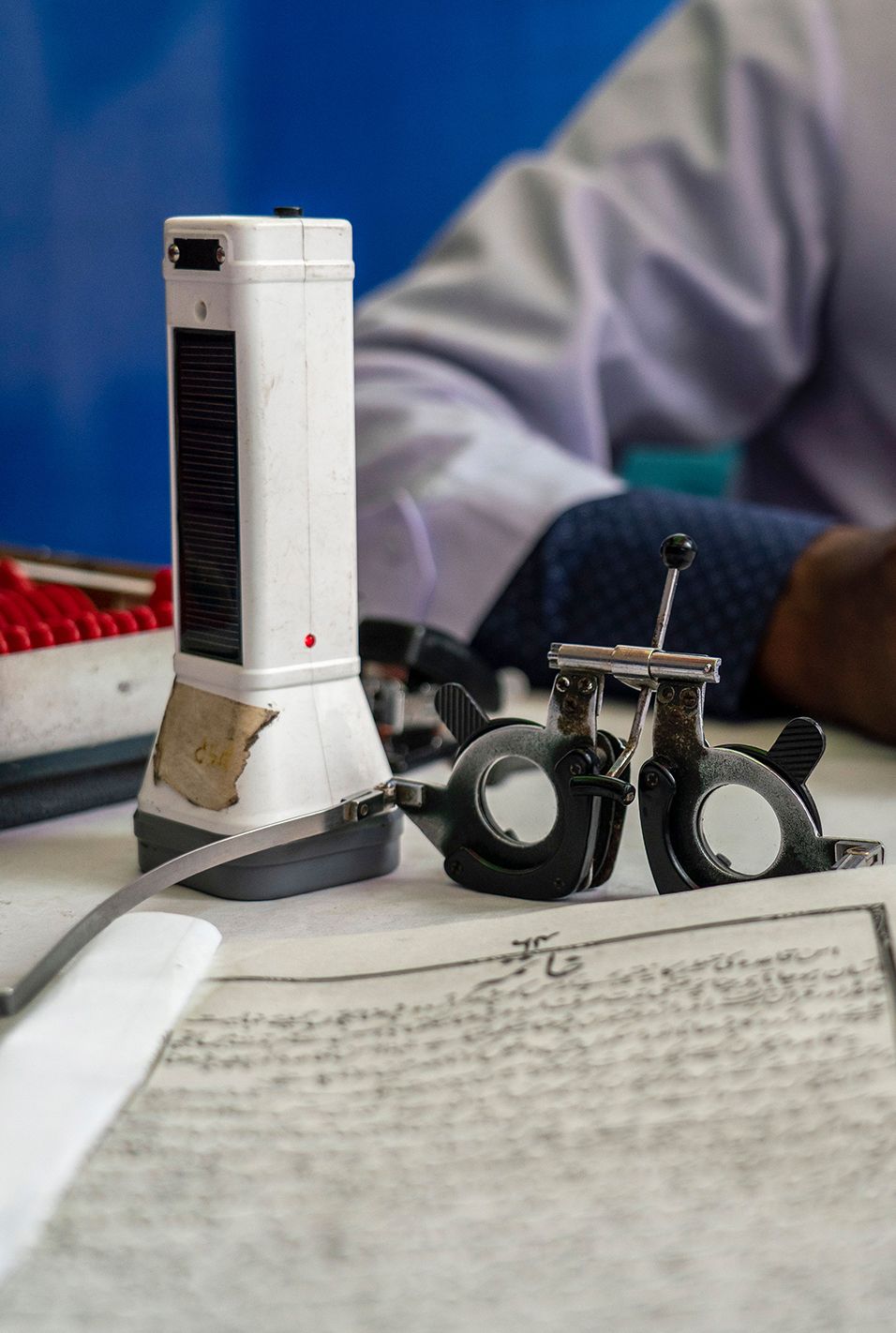
A refractionist's notes and equipment at an eye camp in Rangpur, Bangladesh for the Bihari Community.
A refractionist's notes and equipment at an eye camp in Rangpur, Bangladesh for the Bihari Community.
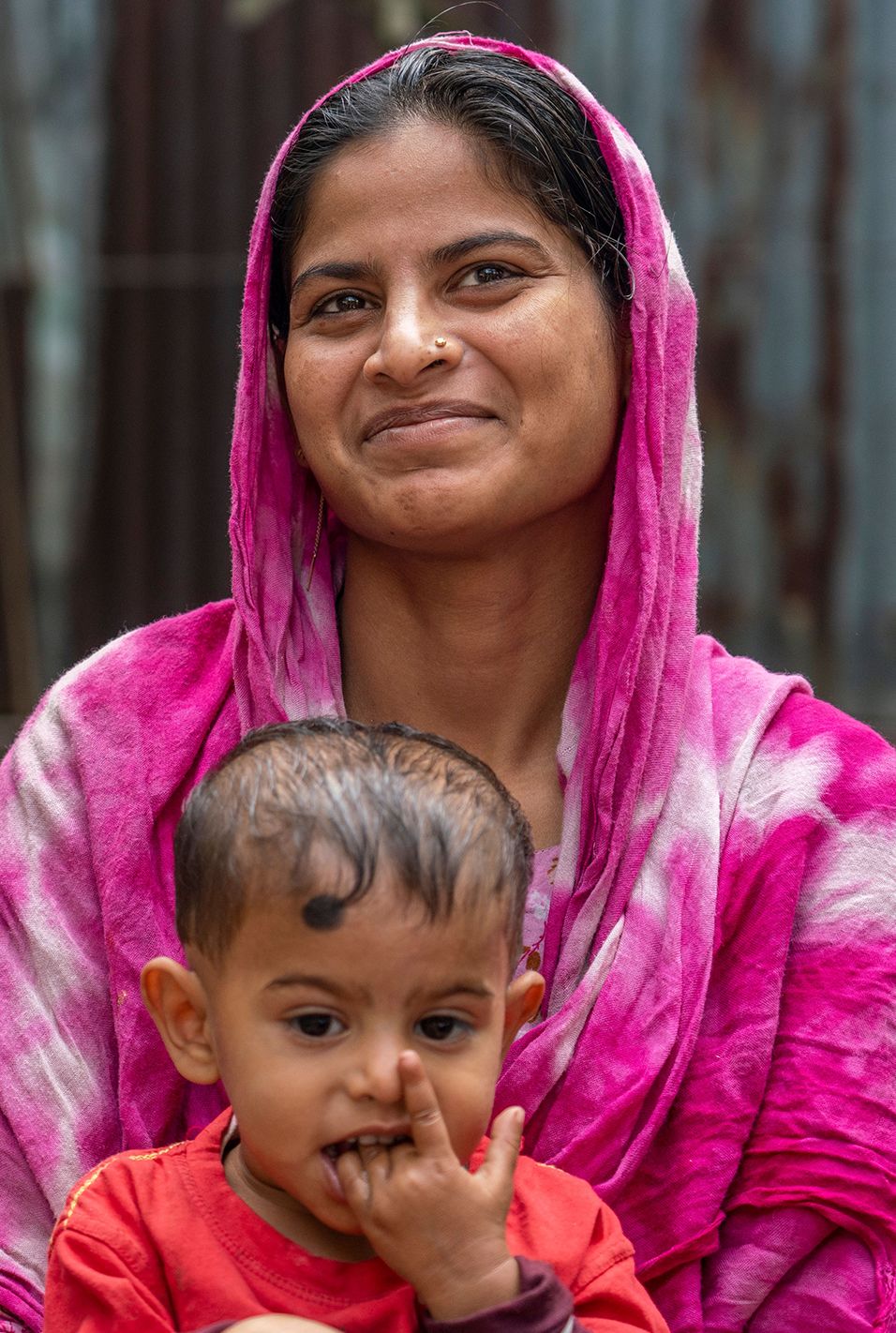
Shamima and her daughter, Toha.
Shamima and her daughter, Toha.
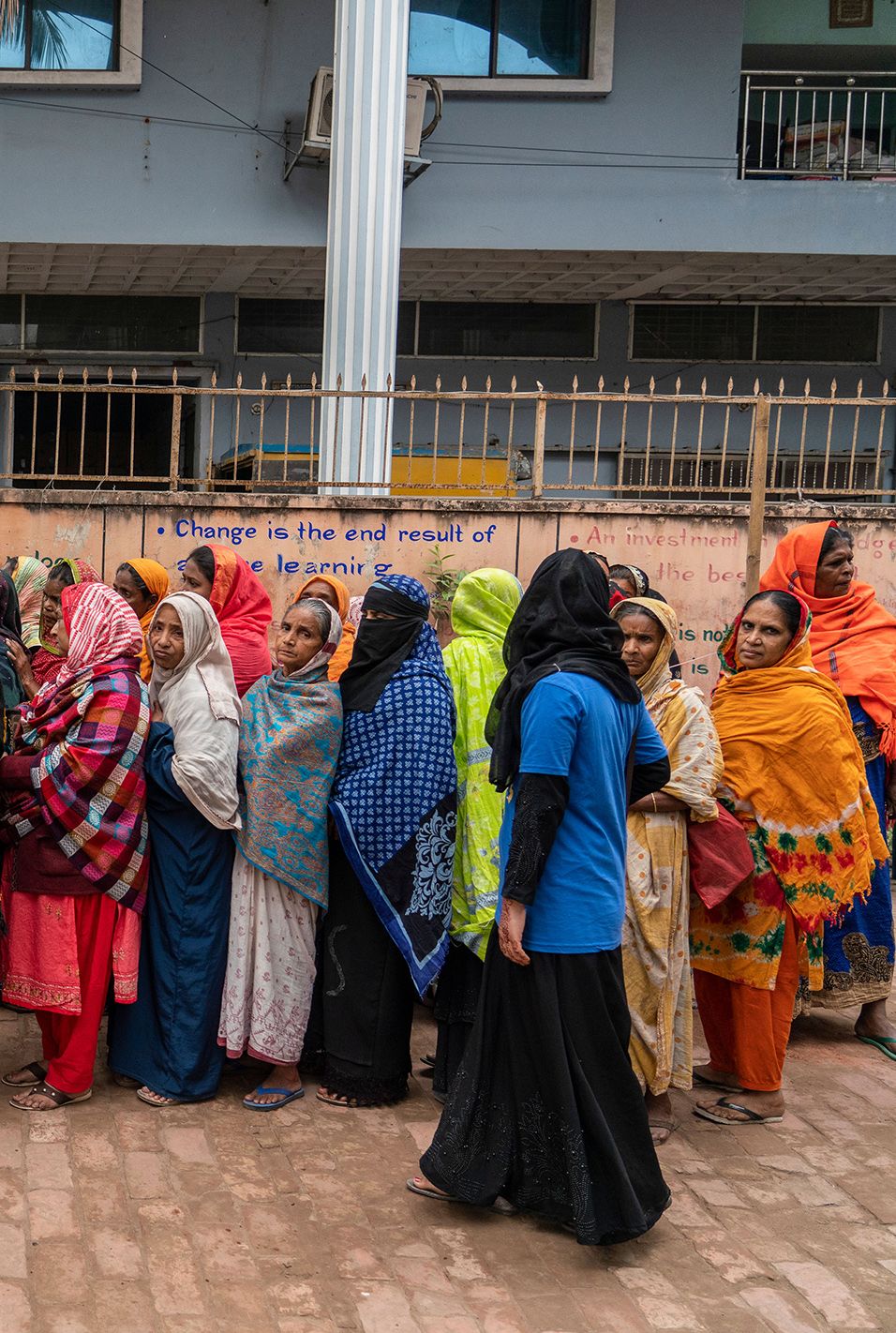
Women queue to register for an eye camp in Rangpur, Bangladesh.
Women queue to register for an eye camp in Rangpur, Bangladesh.
April 2020
Meet the miking team, spreading the word about free eye health care
Travelling through the streets of Narsingdi in Bangladesh, a voice echoes out of large megaphone on top of a colourful tuk-tuk, inviting people to attend one of Sightsavers’ pop-up eye health camps.
Join our miking team as they spread the word
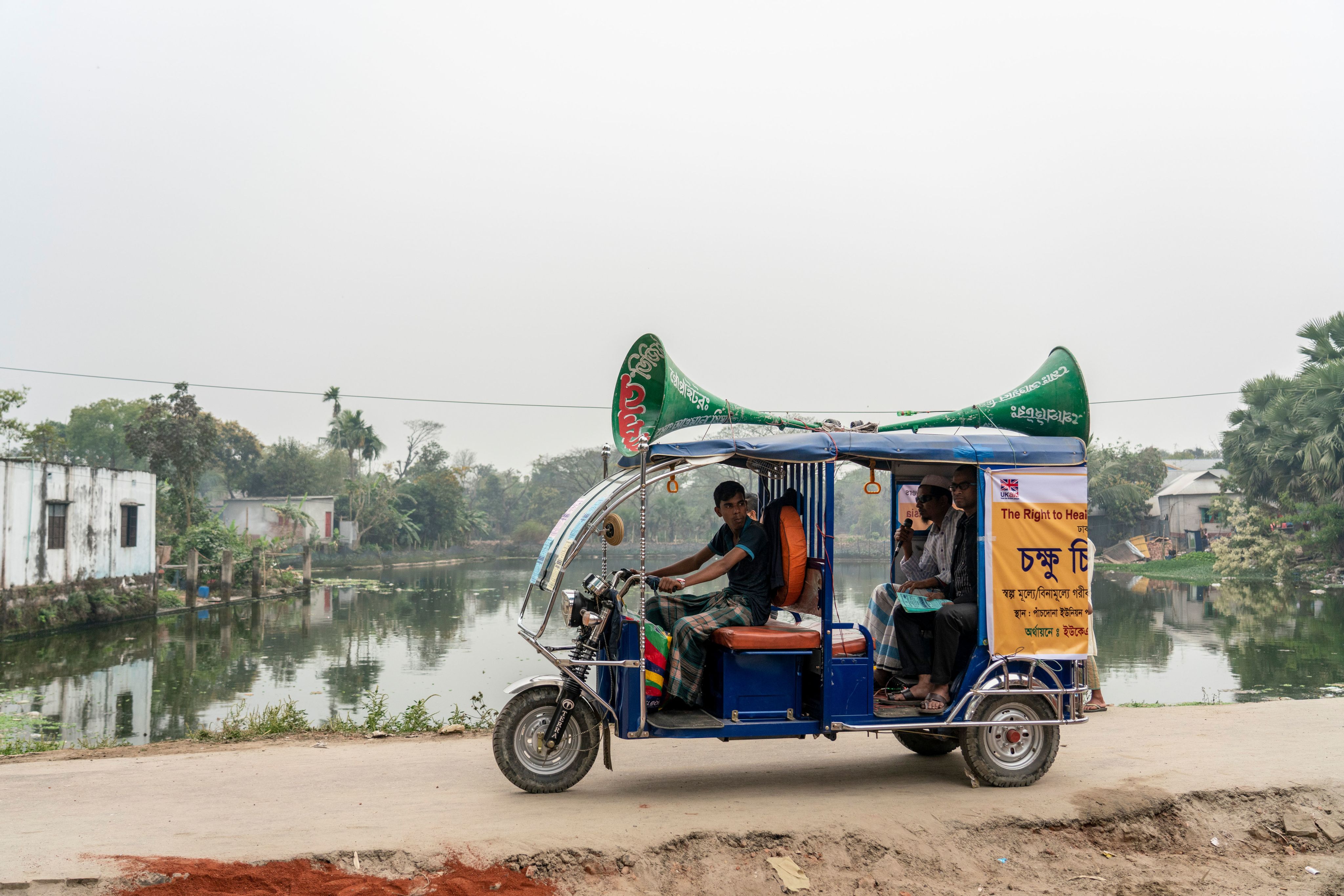
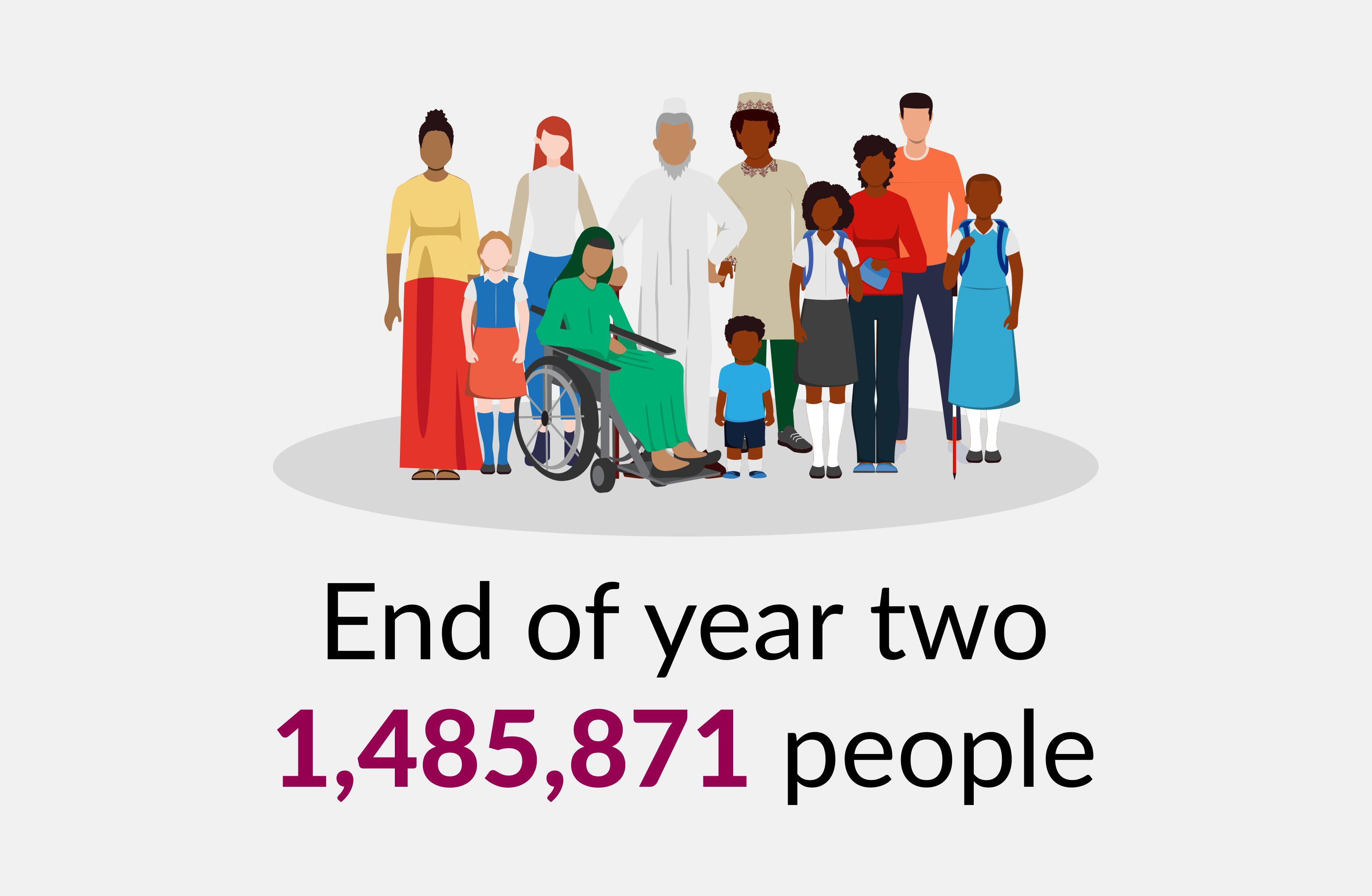
July 2020
In the second year of the project, we reached 715,151 people across both countries
This brings the total number of people reached by the project so far to 1,485,871


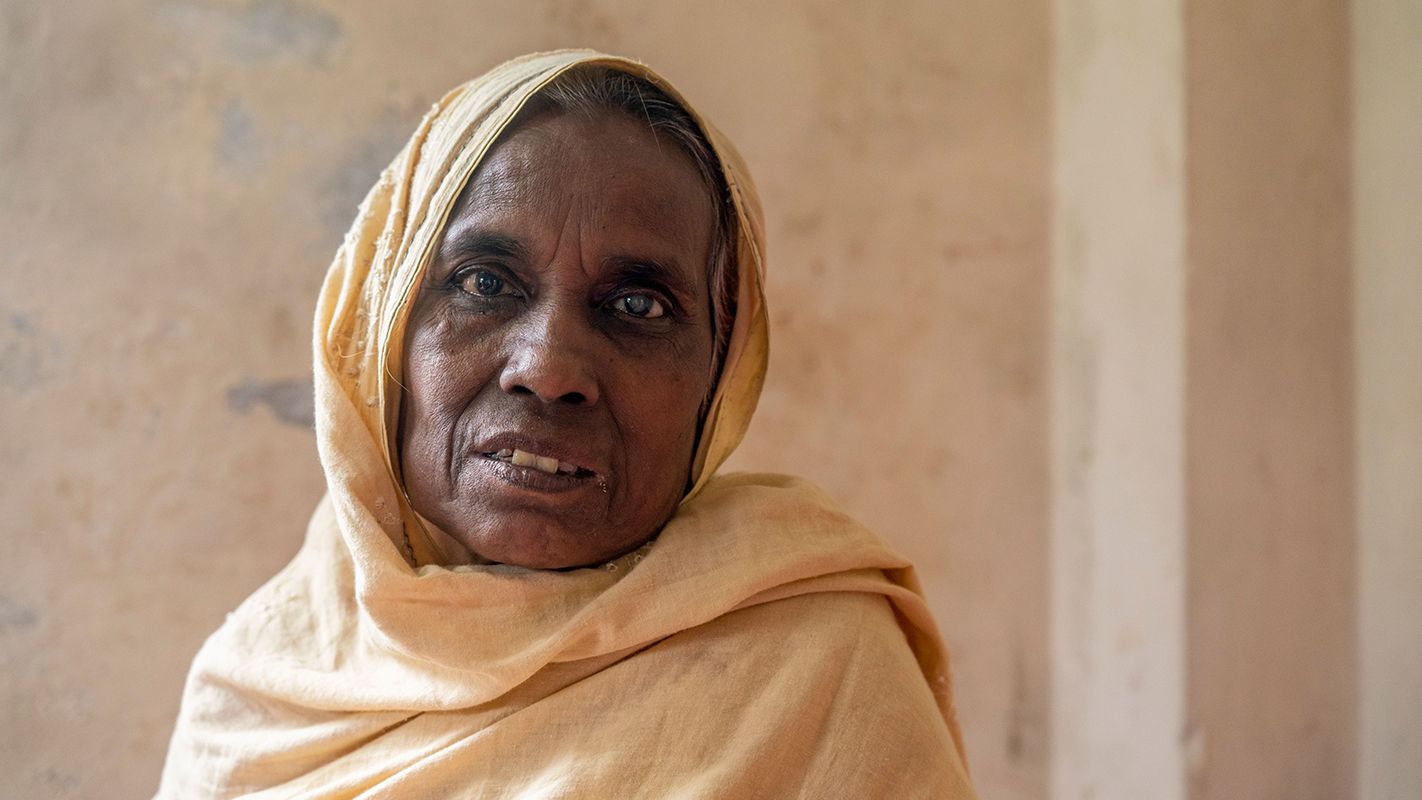
Hasina at the hospital in Rangpur, Bangladesh before her free cataract operation.
August 2020
“I think after the operation I will see. I want to see the people who are around me clearly”
Hasina lives in a camp in northern Bangladesh that has been demolished twice. Since developing cataracts, her fears of being homeless again were heightened. We followed her story from diagnosis to after her operation where our team video called a delighted Hasina.
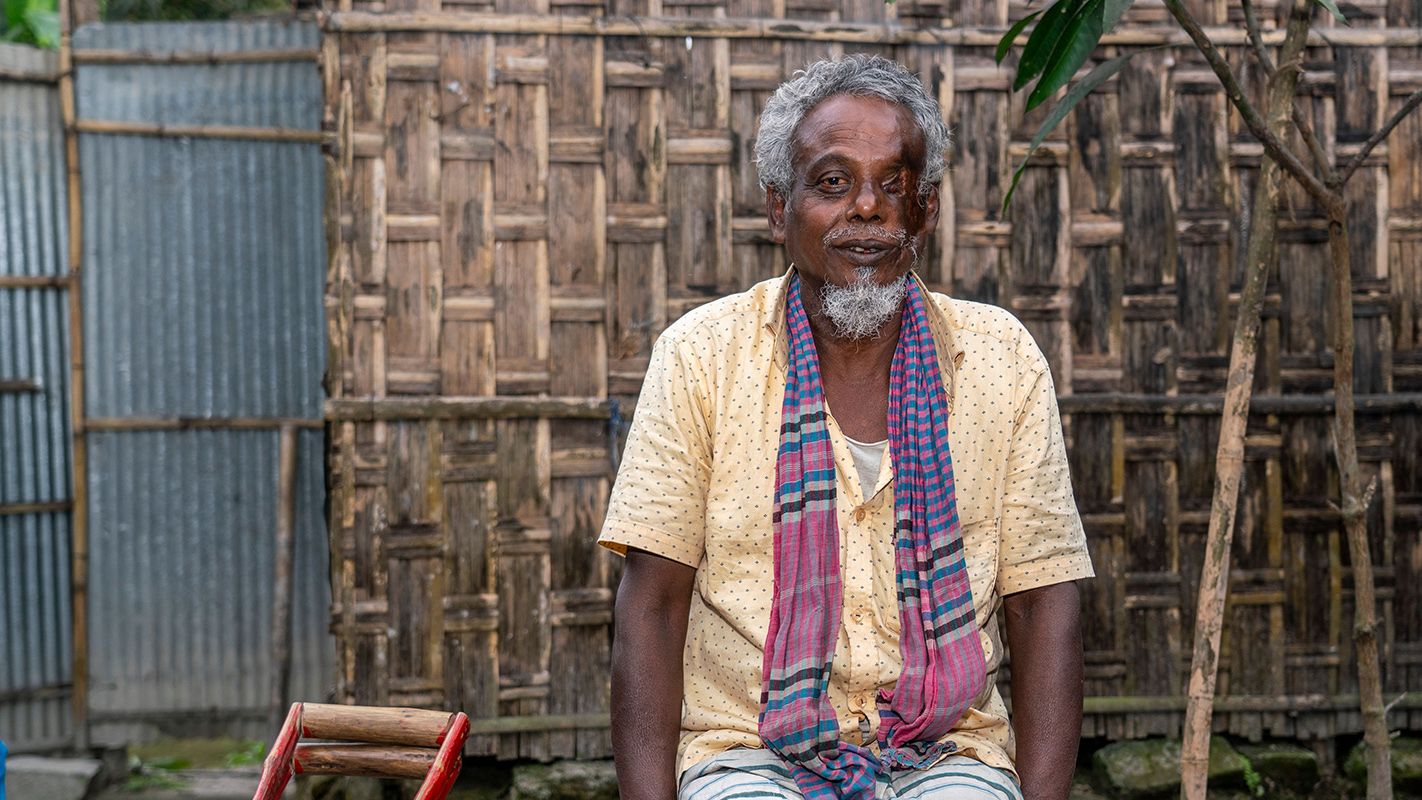
Yousuf at his house in Rangpur, Bangladesh.
August 2020
A lightning strike changed Yousuf’s life forever
After being knocked unconscious during a thunderstorm and turned away from the urgent medical treatment he needed, Yousuf lost one of his eyes and had to have one leg amputated at his home. Years later, he lost his sight in his remaining eye, leaving him unable to walk.
But through his determination, the support and love of his devoted wife Helena, and a sight-saving cataract operation, life is finally looking better.
October 2020
What does it take to hold a successful pop-up eye camp?
Over the lifetime of the project, we’ve held 1,976 eye camps. Pop-up screening camps are at the heart of the Right to Health project: we take free eye health care directly to the people who need it most.
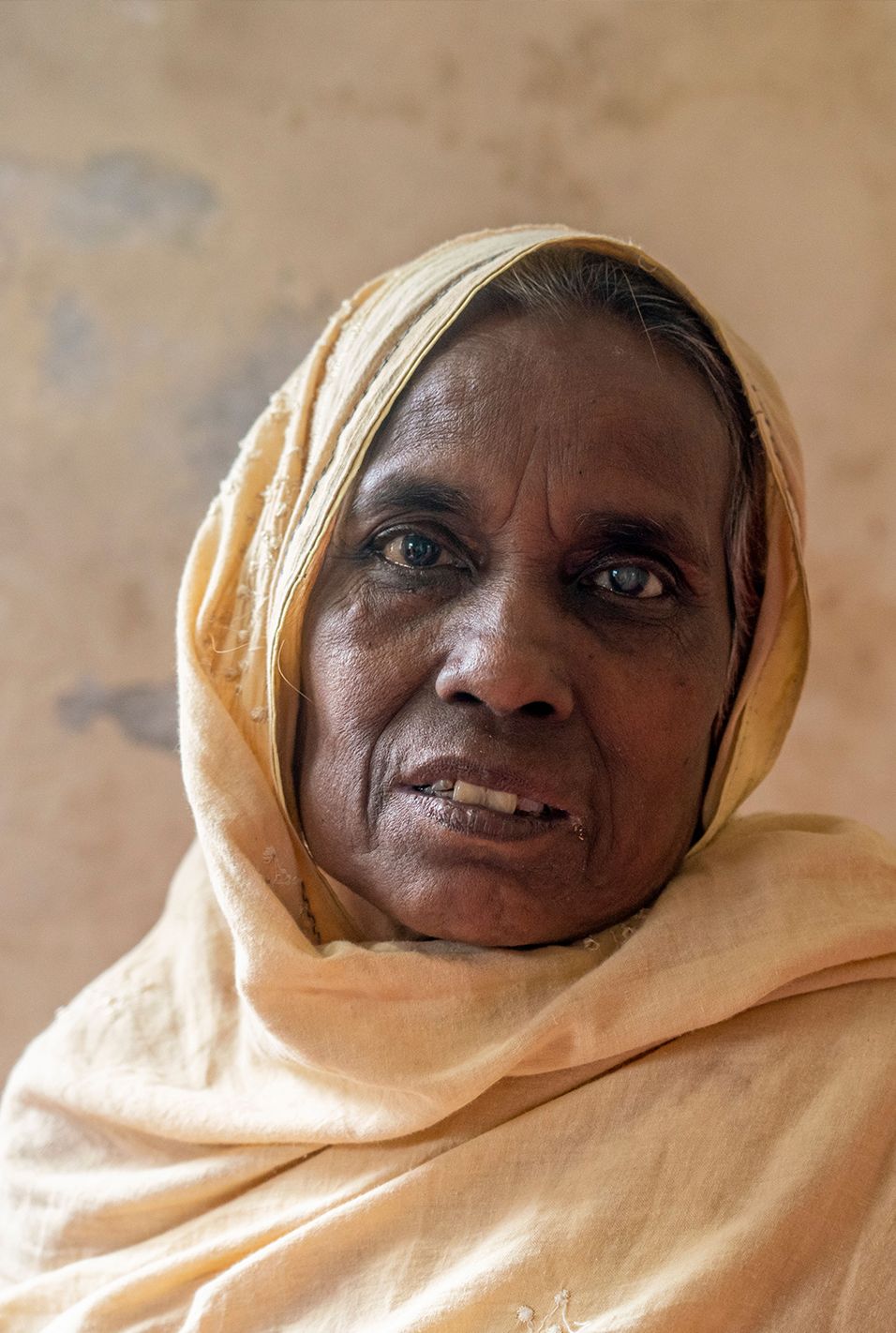
Hasina at the hospital in Rangpur, Bangladesh before her free cataract operation.
Hasina at the hospital in Rangpur, Bangladesh before her free cataract operation.
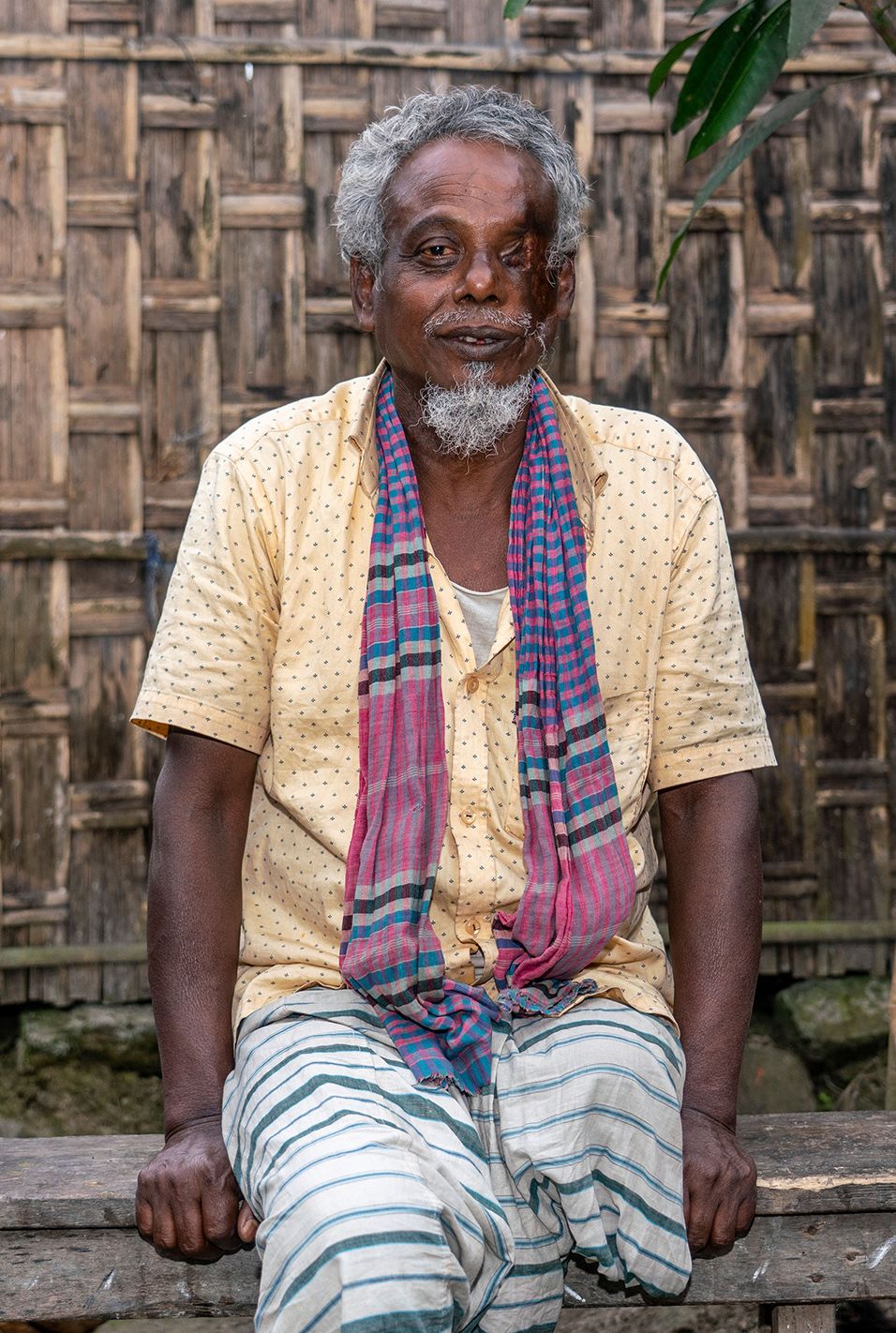
Yousuf at his house in Rangpur, Bangladesh.
Yousuf at his house in Rangpur, Bangladesh.
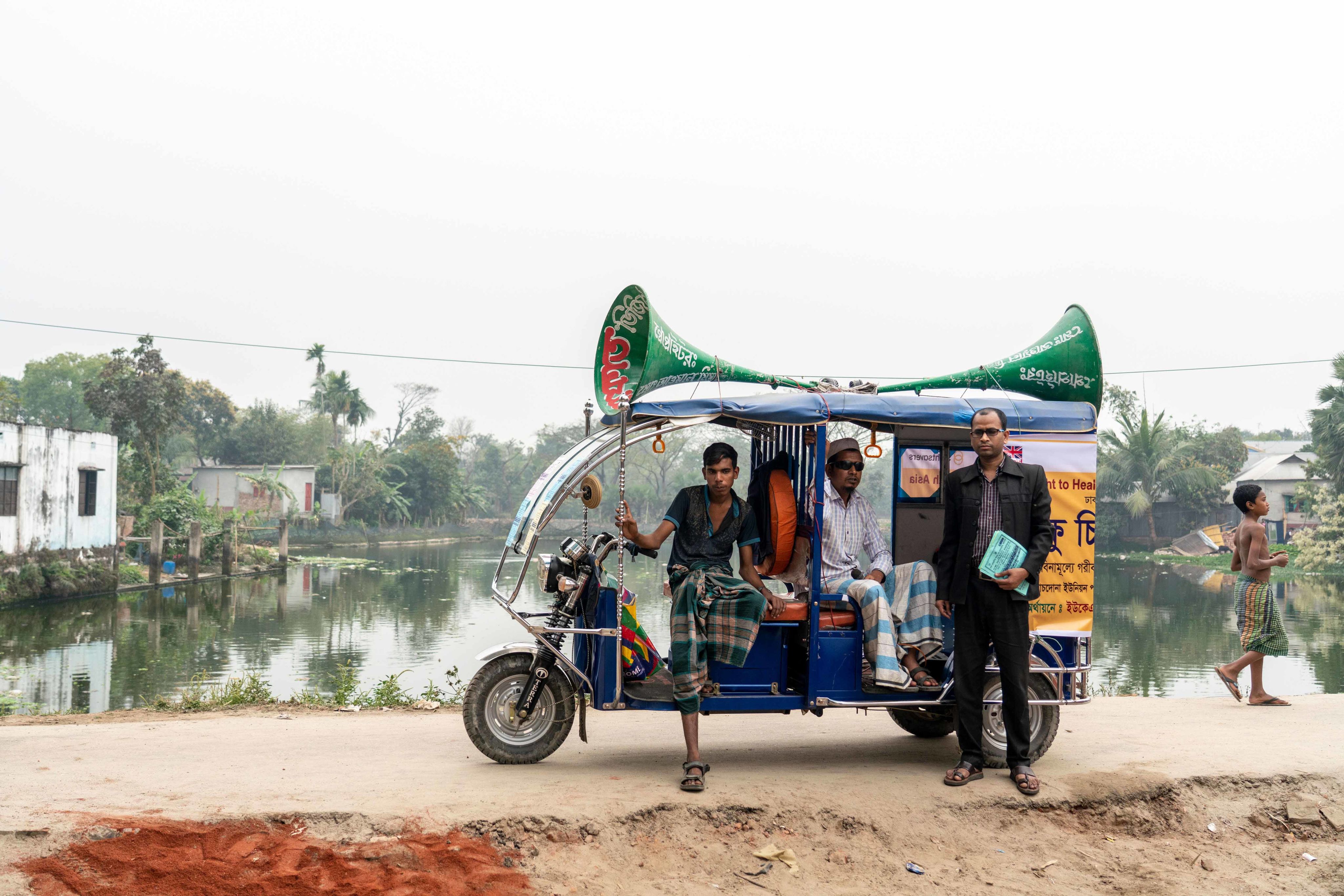
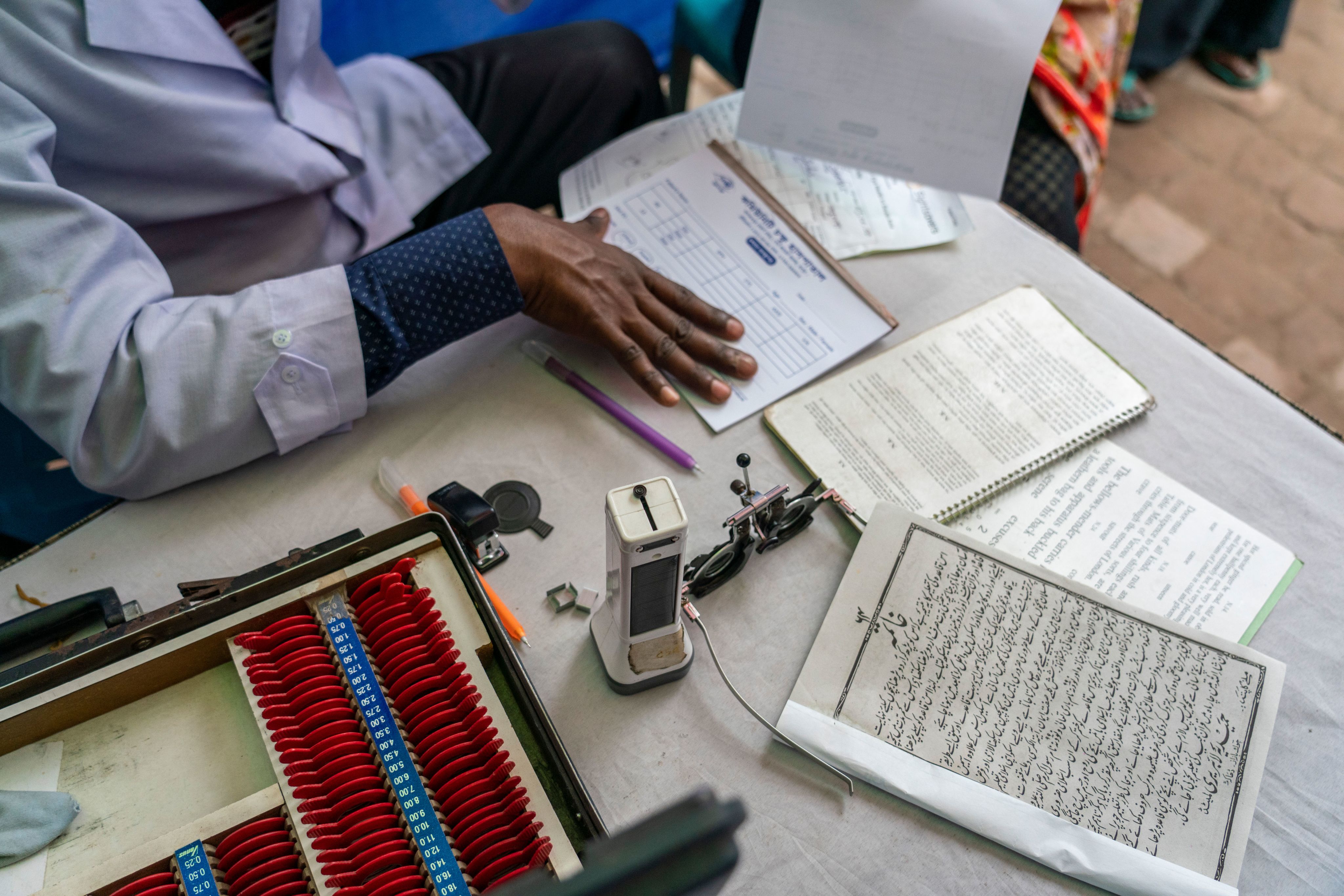
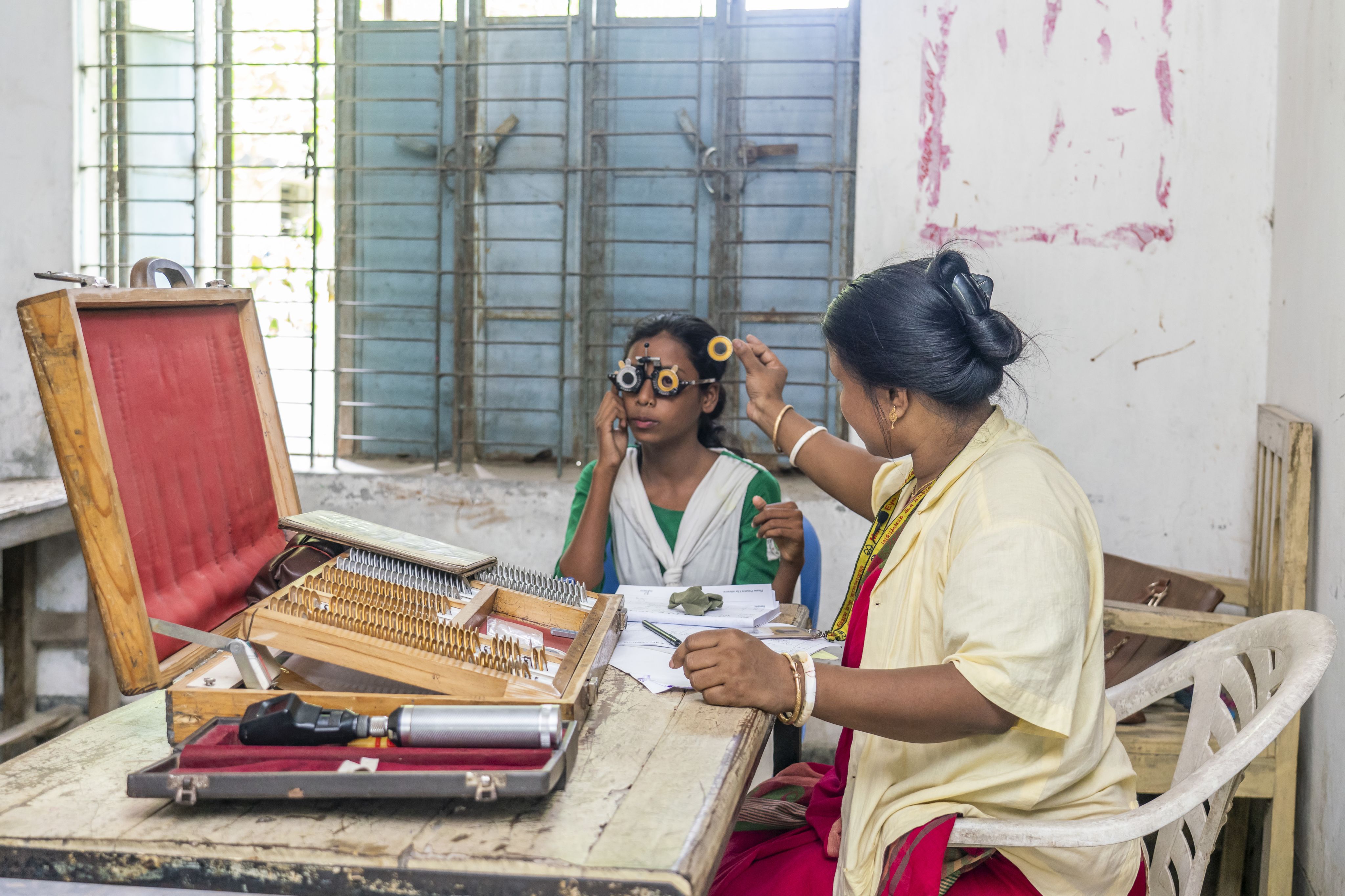

The miking team in Narsingdi, Bangladesh spread the word about an upcoming eye camp.
The miking team in Narsingdi, Bangladesh spread the word about an upcoming eye camp.

The refractionist at the eye camp in Rangpur, Bangladesh lays out his equipment.
The refractionist at the eye camp in Rangpur, Bangladesh lays out his equipment.

A student at a local school in Kurigram District, Bangladesh has a free eye screening.
A student at a local school in Kurigram District, Bangladesh has a free eye screening.
2021

January 2021
Reaching transgender communities
In both Bangladesh and Pakistan, we reached out to transgender communities to provide them with eye care services. People in these communities have not been able to access health care in the past due to the cost and the discrimination they received when seeking treatment. Our eye camps created a safe space for them to receive free care.
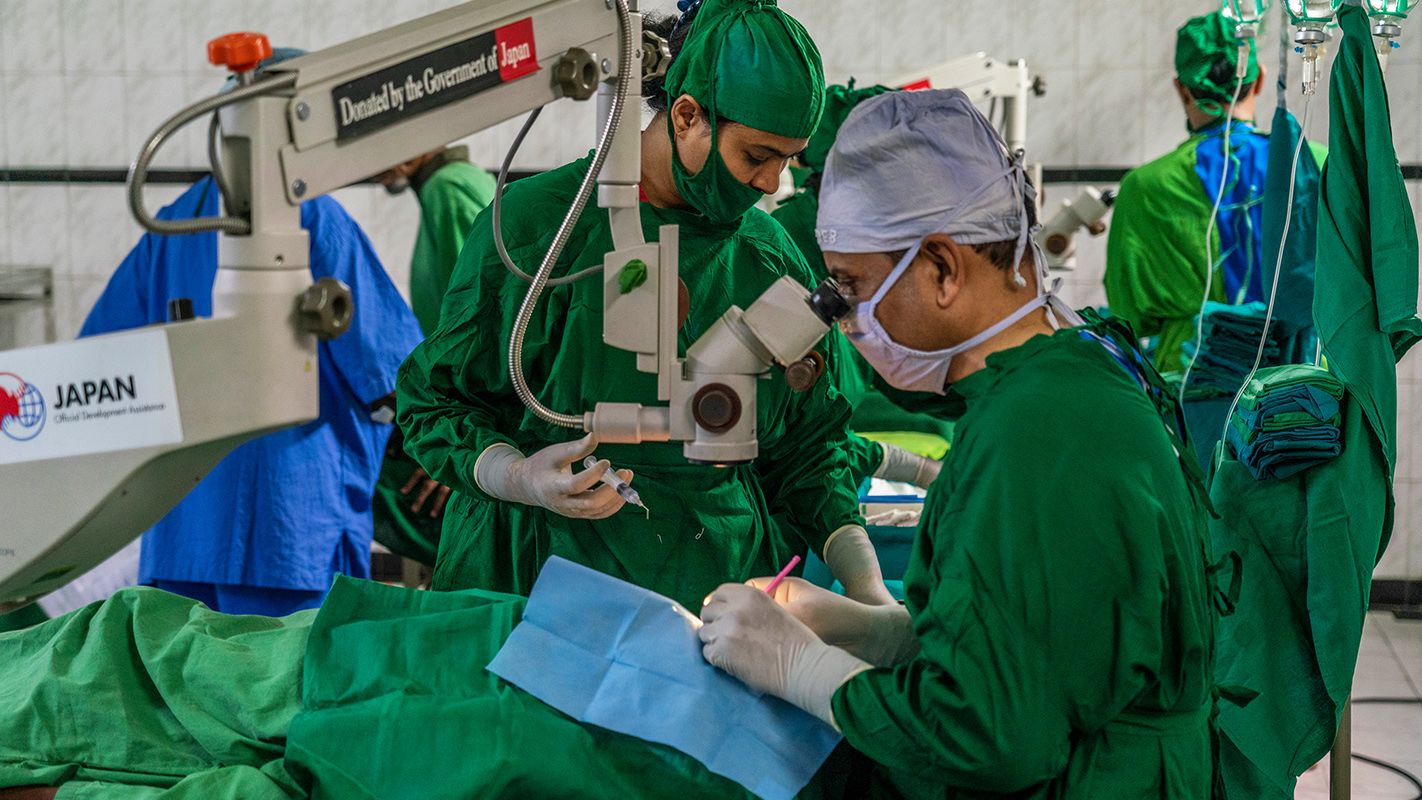
An operation taking place at Marium Eye Hospital in Kurigram, Bangladesh. Patients from eye camps across Rangpur are referred to this hospital for treatment.
June 2021
The project is extended for six months
In June, the project applied for a no-cost extension due to closures and suspensions during COVID-19. This allowed the sight-saving work to continue for another six months without any additional funding.
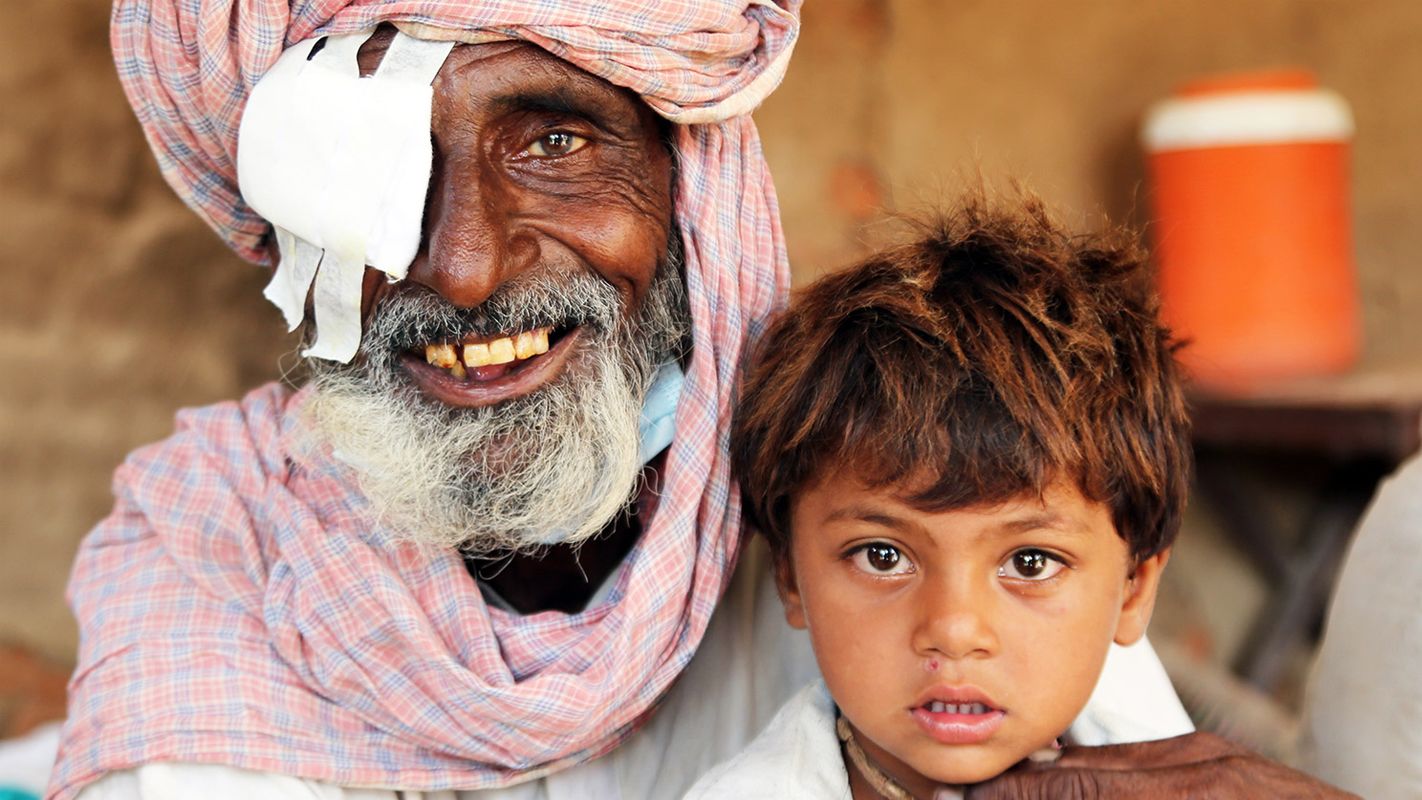
Sardar after his cataract operation.
October 2021
“Now I can see again, I can make money to support my family”
Father and grandfather Sardar, from Shahpur in northern Pakistan, is the main breadwinner for his family. Reliant on his income and care, his children and grandchildren faced an uncertain future when he began to develop cataracts.
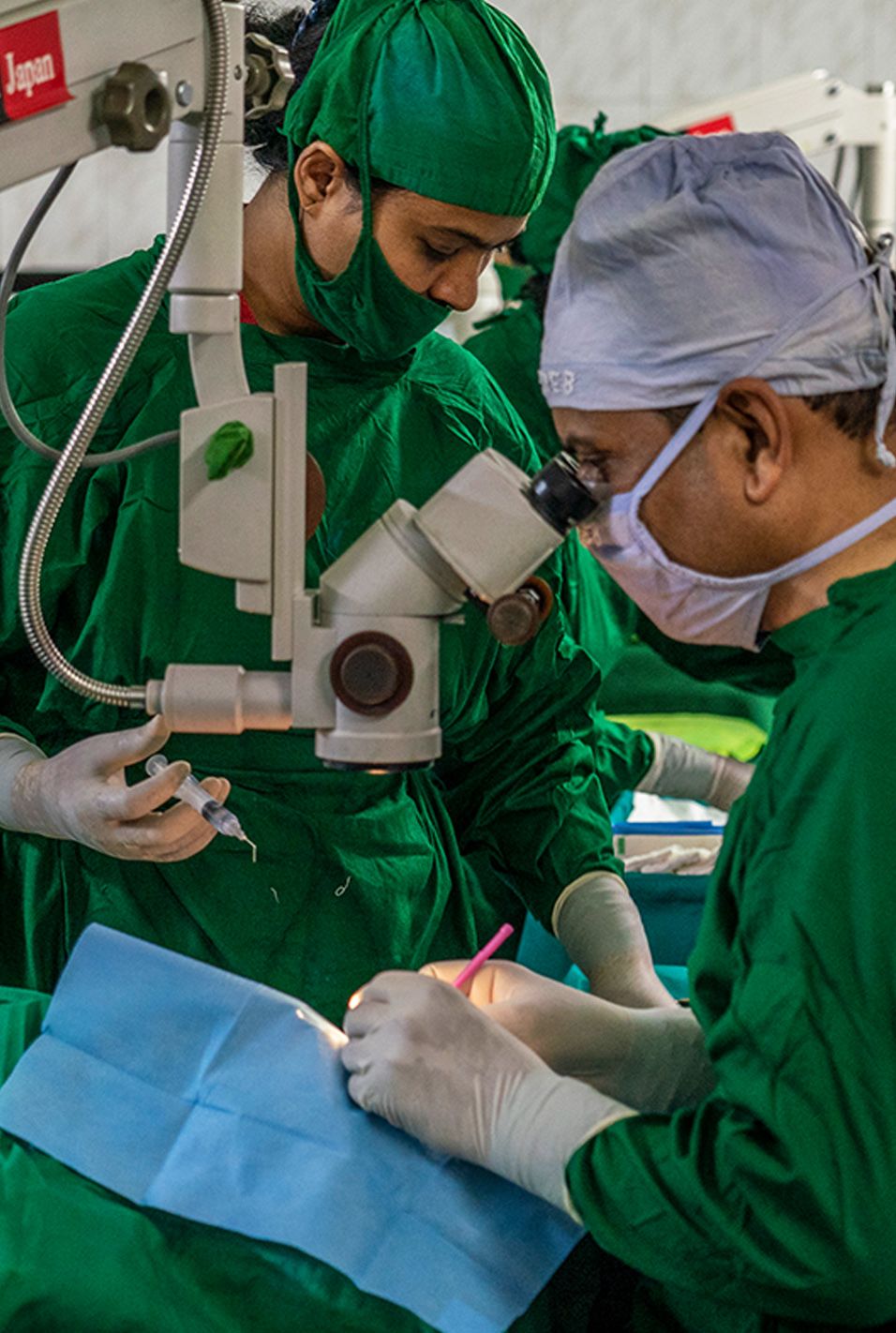
An operation taking place at Marium Eye Hospital in Kurigram, Bangladesh. Patients from eye camps across Rangpur are referred to this hospital for treatment.
An operation taking place at Marium Eye Hospital in Kurigram, Bangladesh. Patients from eye camps across Rangpur are referred to this hospital for treatment.
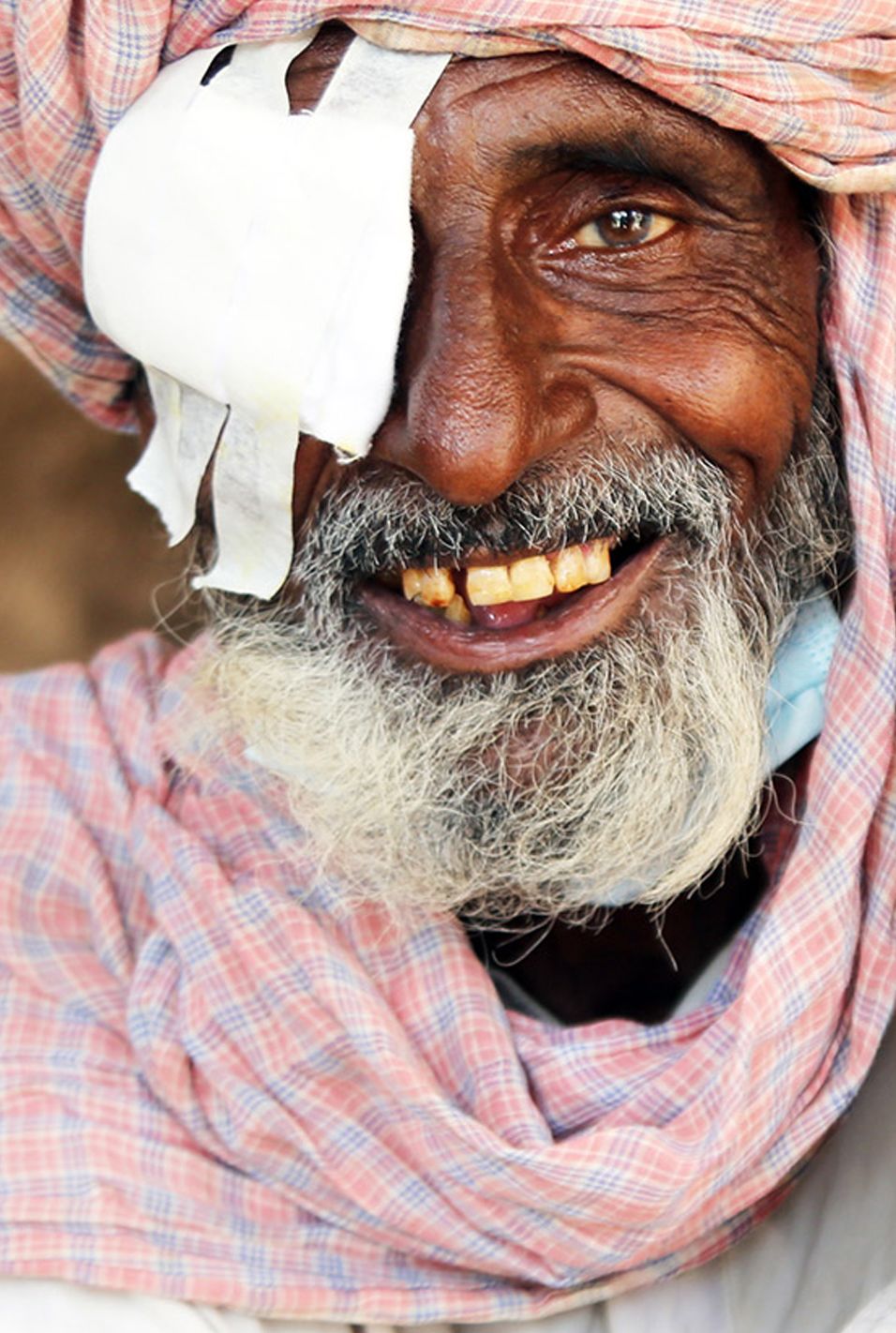
Sardar after his cataract operation.
Sardar after his cataract operation.
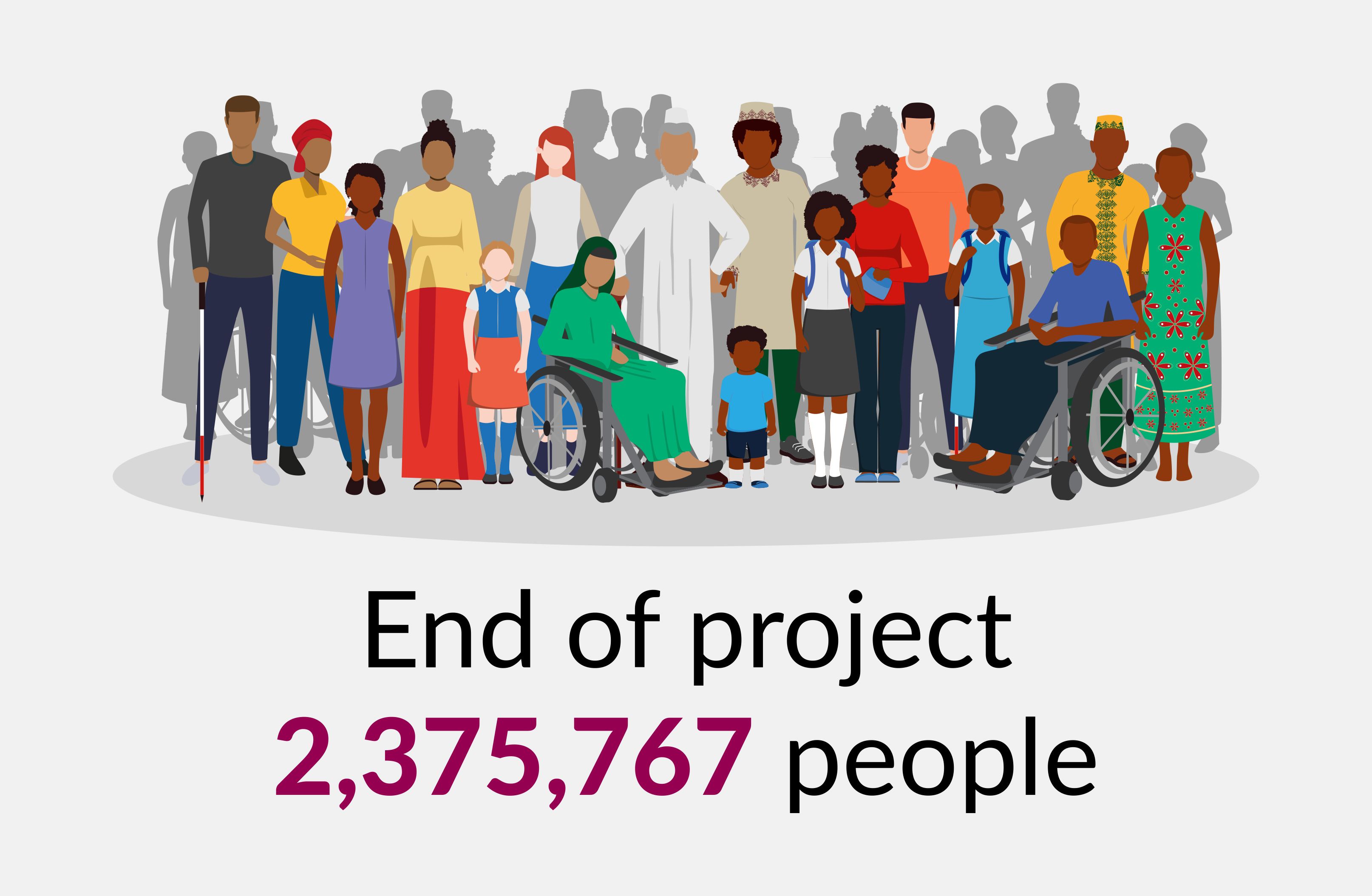
December 2021
After 42 months, the Right to Health project had reached 2,375,767 people
That's 105% of our target!


The 2,375,767 people that we reached through the project received treatment in a number of ways:
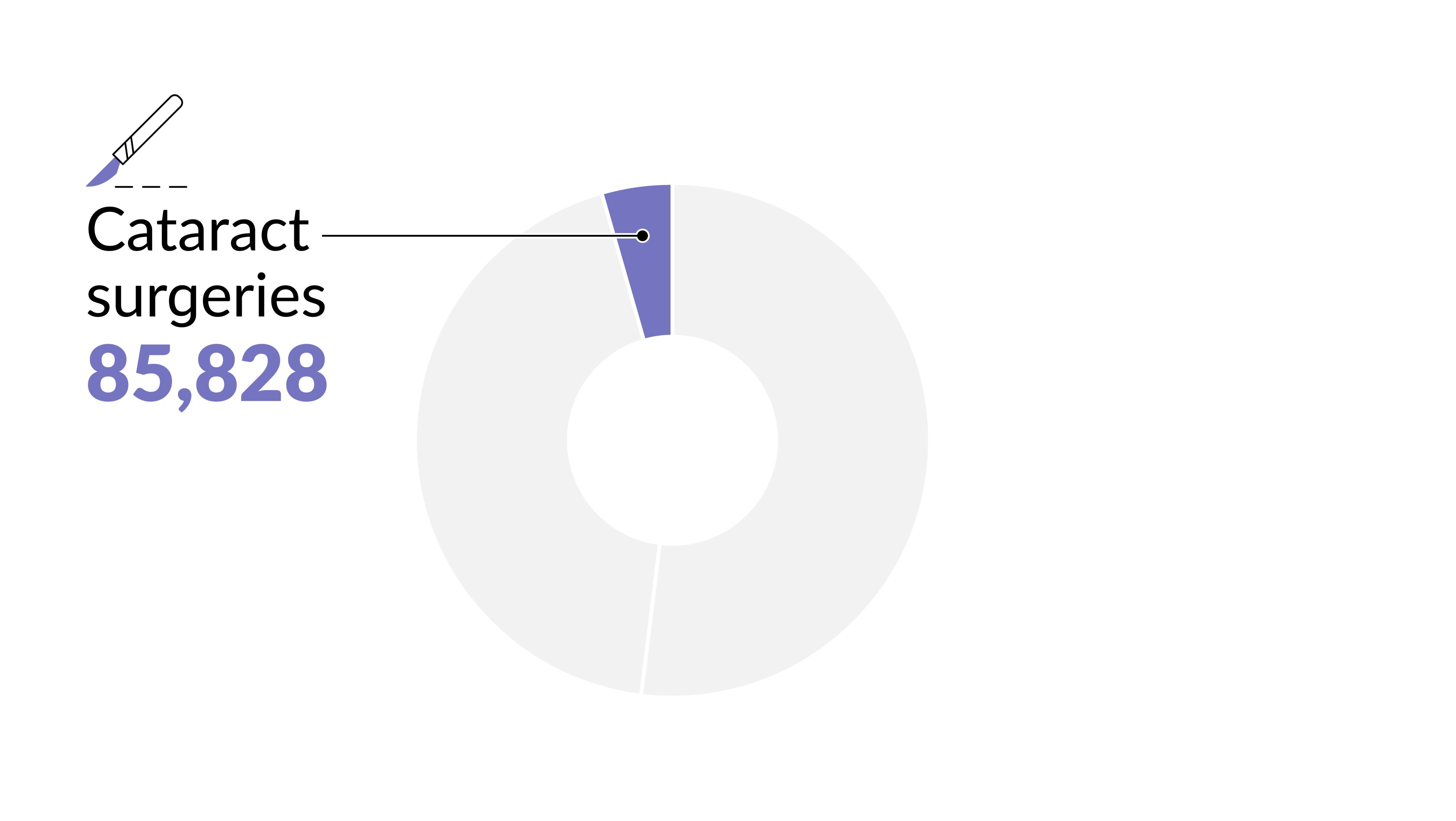
Cataract surgeries:
Through our partner hospitals, 85,828 patients had cataract surgery.
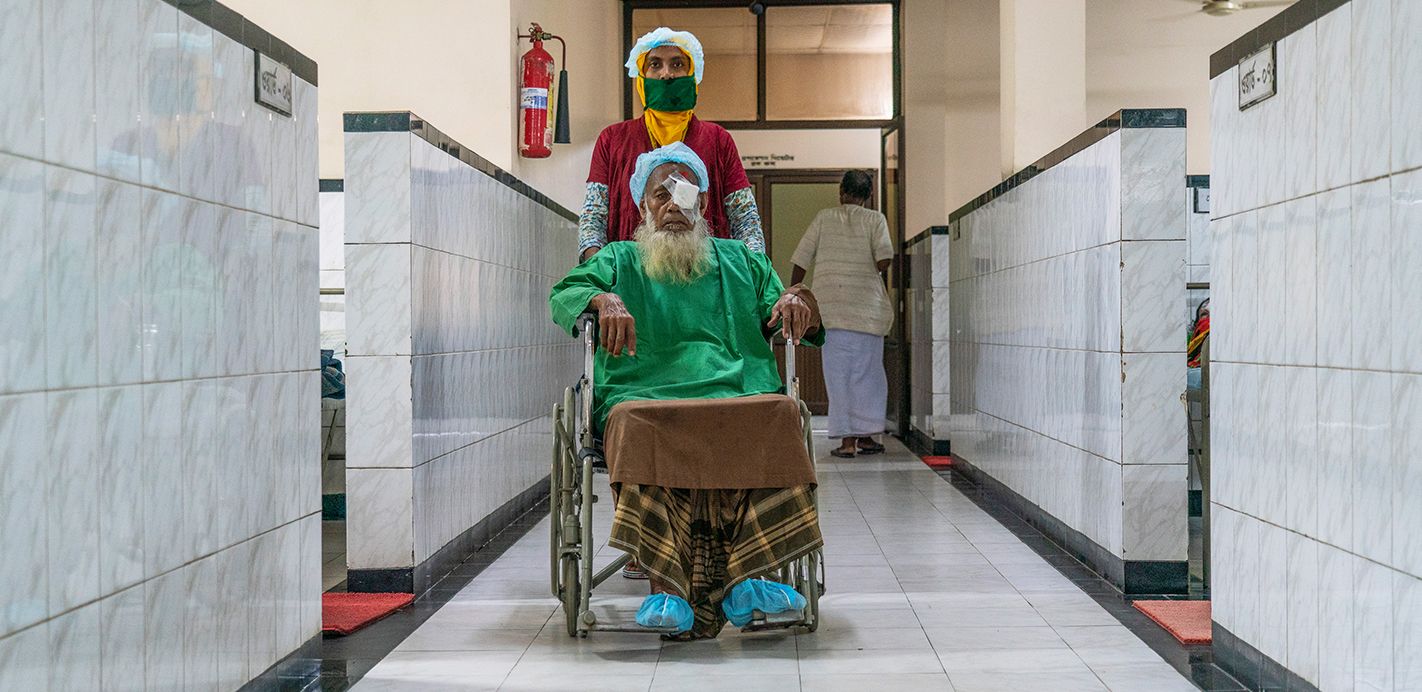
A patient after their surgery at Marium Eye Hospital.
A patient after their surgery at Marium Eye Hospital.
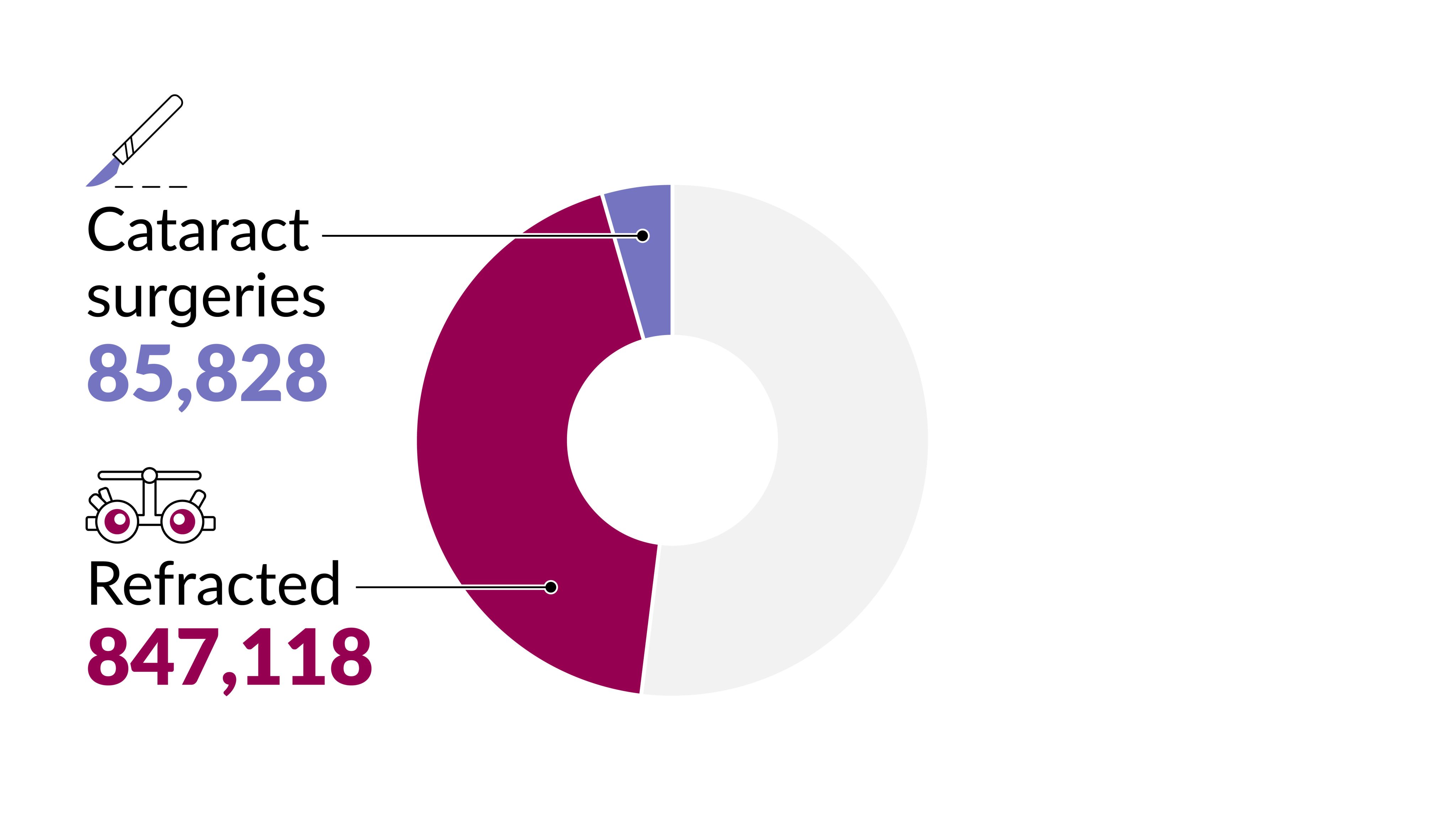
Refractive error services:
847,118 patients accessed refractive error services. This included holding detailed eye examinations, providing prescriptions and informing people if they require glasses.
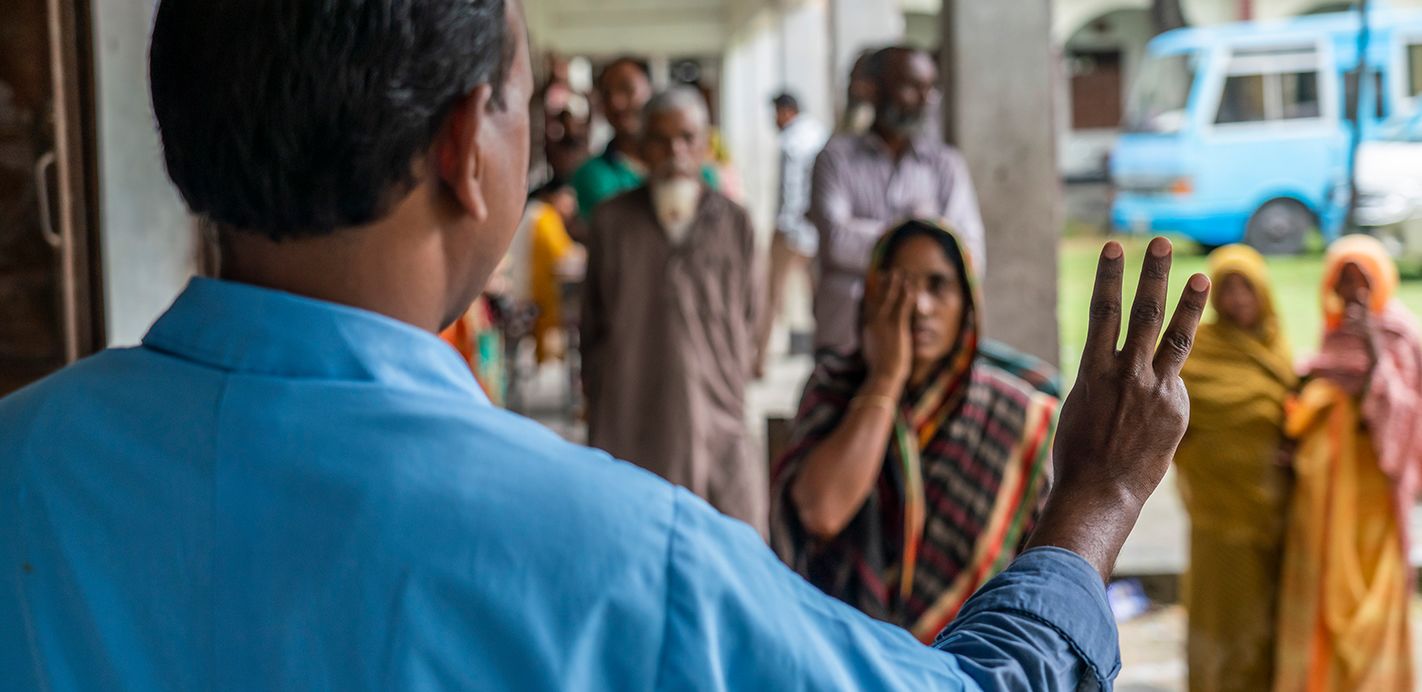
A health care worker performs a vision test at an eye camp at Gunaigachi High school in Kurigram.
A health care worker performs a vision test at an eye camp at Gunaigachi High school in Kurigram.
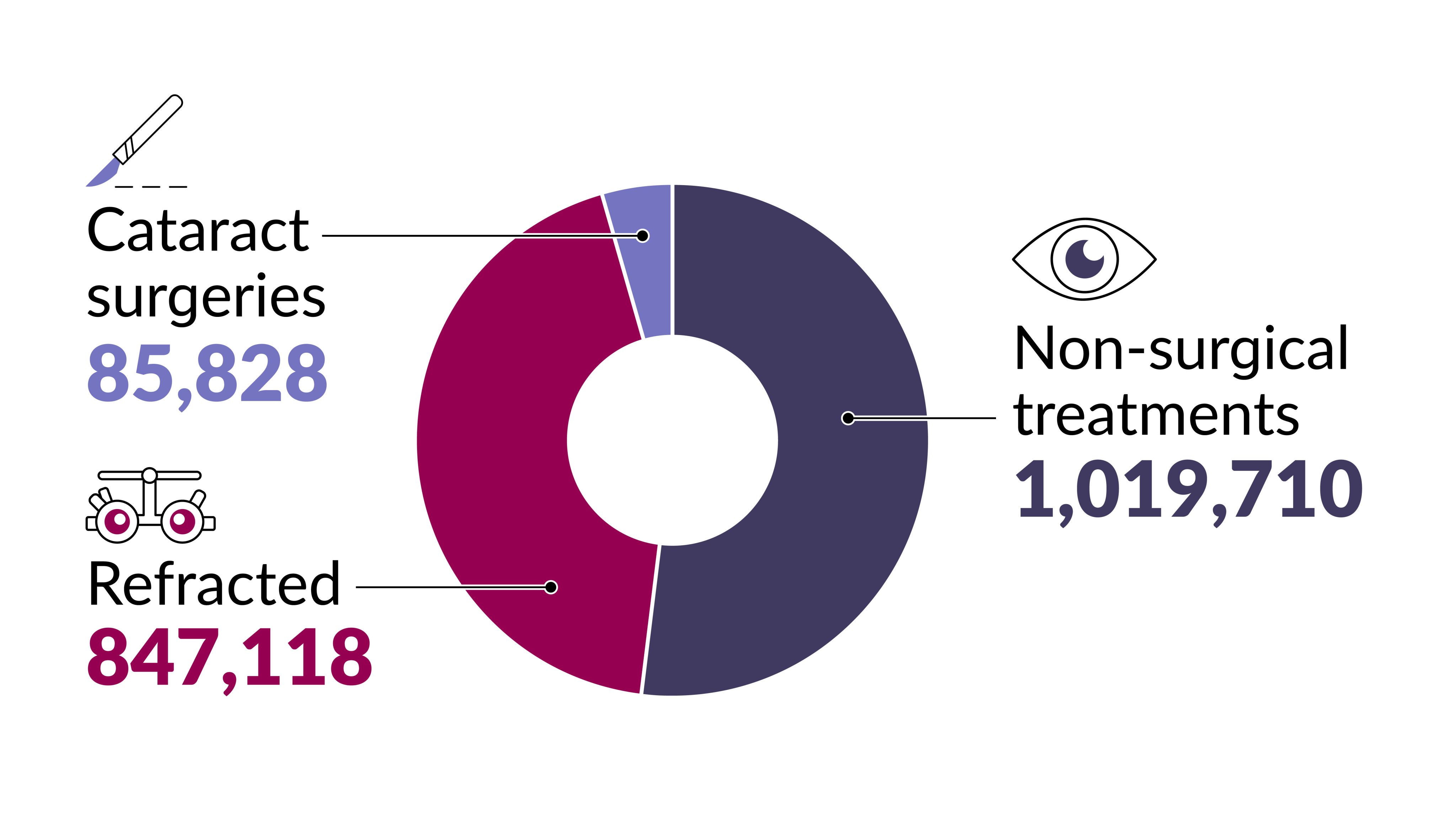
Non-surgical treatments:
We also distributed 1,019,710 non-surgical treatments (for example, prescriptions for treating conjunctivitis).



2022 and beyond

The impact of the Right to Health project has not ended with the project’s conclusion. The changes made at health care facilities from the accessibility audits will continue to help people access treatment and be a guide for others to aspire to and replicate. The inclusion training that health staff received will make a difference every day, ensuring that they can effectively meet the needs of people who have been marginalised on the grounds of disability and other factors.
The outreach eye camps have helped to increase demand for treatment as more people understand what services are available to them and why it’s important to seek treatment. The data gathered will help provide more insight and will contribute to national change. Also on a national level, the policy achievements in Pakistan on inclusive guidelines and plans will lead to more equitable and accessible services in the future.
Throughout the project, we reached more than two million people. But behind the success and statistics are the stories of the people whose sight was saved. Above, we shared the stories of Hasina, Yousuf and Sardar, and today we check in with them and look towards their futures.
Read on to see how they are now.
Hasina photographed in 2020
Hasina in 2022
“I am now strong, assured and relaxed. I regained my confidence. It is important that I can take care of myself”
Yousuf photographed in 2020
Yousuf in 2022
“After the operation, when I first saw the trees, sky and the natural environment... I got beauty back in my life”
Sardar photographed in 2021
Sardar in 2022
“Seeing my grandchildren gives me immense pleasure. I was not able to see their faces clearly before the surgery; now I can see them and kiss them”
© 2022 Sightsavers. Registered charity numbers 207544 and SC038110
